Swiss Manuscript Collections
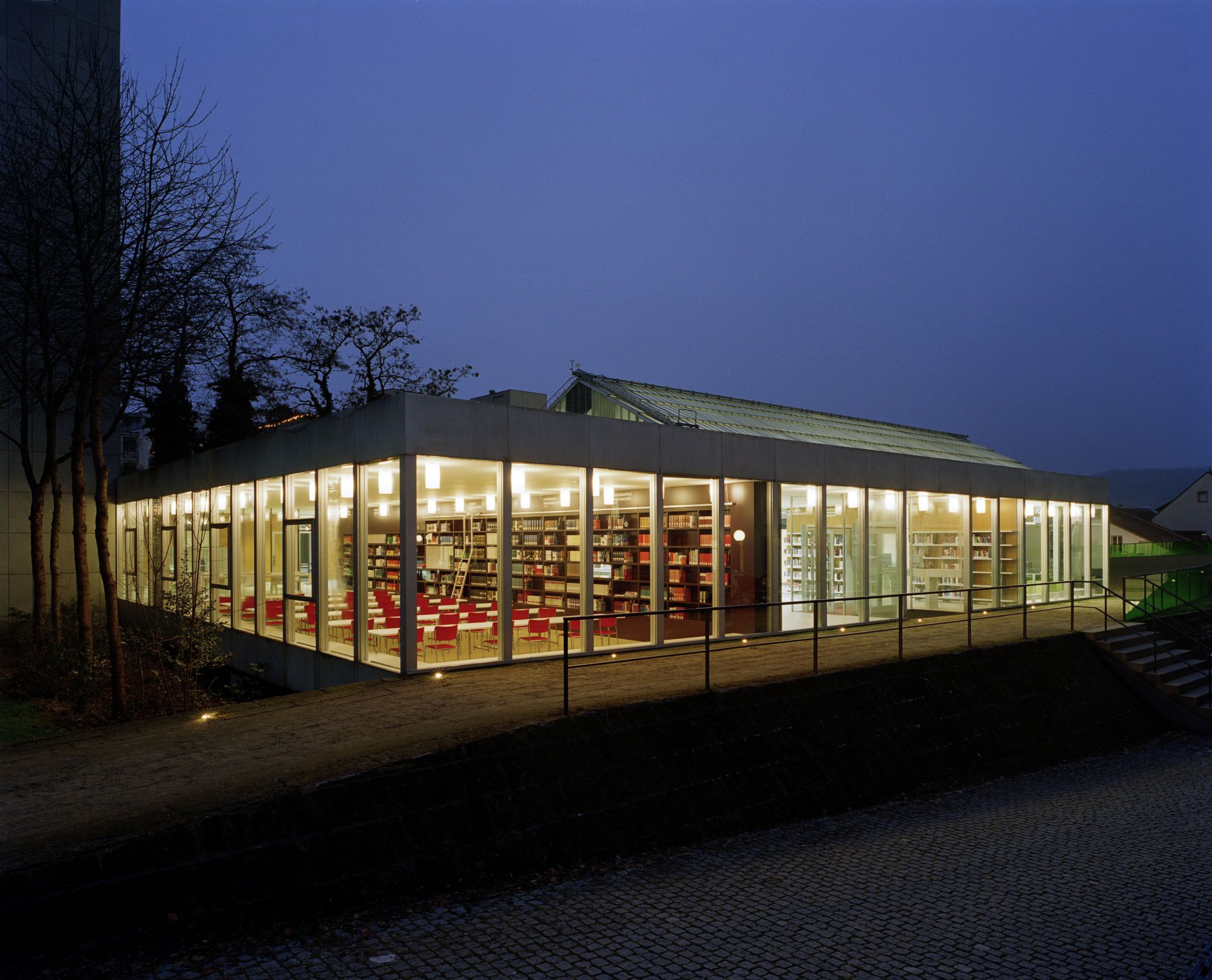
Aarau, Aargauer Kantonsbibliothek
The medieval and early modern collection of the Cantonal Library of Aargau’s manuscript department is home to numerous valuable rare and unique items. The often beautifully illustrated manuscripts come mainly from the private library and collection of the family of magistrates of Zurlauben from Zug, which was purchased by the canton in 1803, and from the libraries of the Abbeys of Muri and Wettingen, which were secularized in 1841.
One of the most important medieval manuscripts in the Cantonal Library’s collection is the so-called Easter Play of Muri, which is estimated to have originated around 1250. Although it is only a fragment, it is considered the oldest surviving rhyming dramatic piece in German. The Cantonal Library has several manuscripts that are outstanding from an art history perspective, among them the three elaborately illuminated volumes of the Wettinger Gradual, dated 1330-1335. Also from Wettingen Abbey is the important three-volume Swiss Illustrated Chronicle by Abbot Christoph Silberysen (1542–1608).
Manuscripts list

Aarau, Staatsarchiv Aargau
The state archive of Aargau collects items that represent the cultural heritage of the canton and ensures that they are properly stored, described and made accessible. By creating a permanent record of official documents, it ensures the transparency of government actions and makes possible scientific research and scholarship. During business hours the archives are open to the public.
The collections of the state archives of Aargau date from the high middle ages to the present time. About 10,000 documents as well as valuable books and records from ecclesiastical and secular rulers have survived from the early and pre-history of the canton, including from the Aargau monasteries of Wettingen, Königsfelden and Muri. The main part of this collection consists of the government and administrative documents of the Canton of Aargau, which was founded in 1803. These core holdings are supplemented by private archives and specialized collections (graphic works, plans and drawings, photographs, films) as well as an extensive specialized library.
Manuscripts list

Appenzell, Landesarchiv Appenzell Innerrhoden
The central location for the conservation of documents from the canton’s public institutions that are worth preserving is the State Archives of the Canton of Appenzell Innerrhoden. It is one of the canton’s documentation centers and, with due regard for data protection, it provides information about the history of the region, church, art and culture of Appenzell Innerrhoden from the middle of the 12th century to the present. The state archives also holds the joint archives of both Appenzells, which contains documents up to their division in 1597. These state holdings are supplemented with numerous archives from church parishes, school communities, corporations, foundations, associations, businesses and prominent public figures of Appenzell.
Manuscripts list
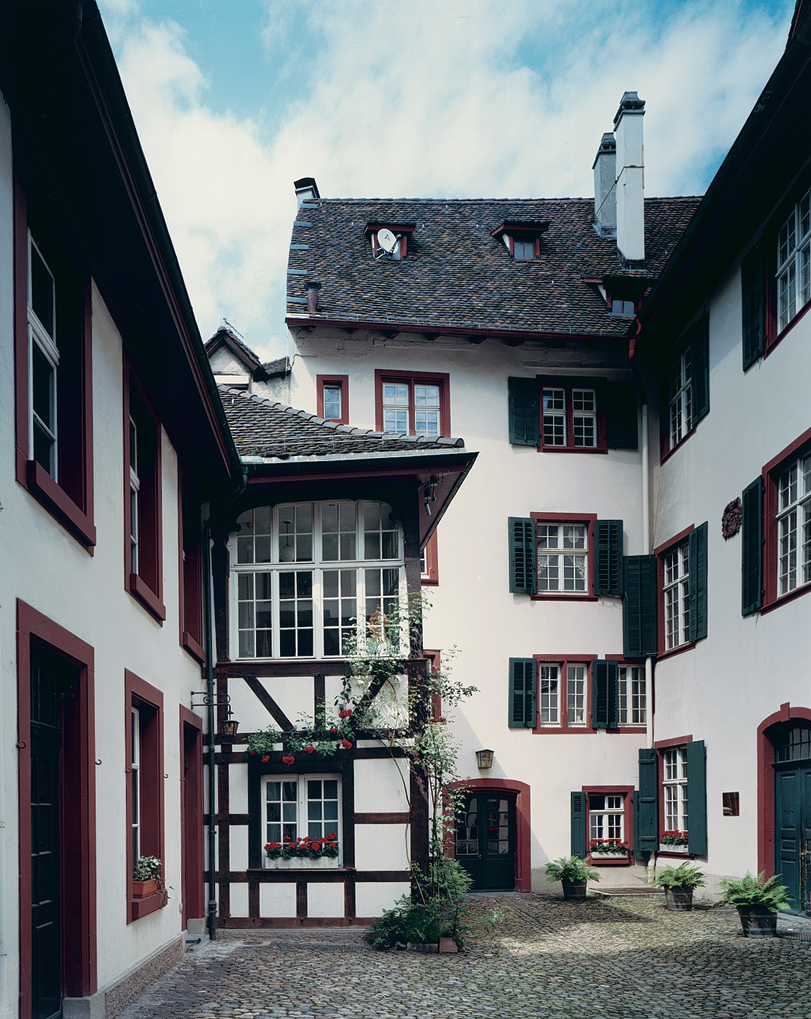
Basel, Bibliothek des Pharmazie-Historischen Museums der Universität
In addition to a collection of objects about the history of pharmacy, the Pharmazie-Historische Museum (Pharmacy Museum) of the University of Basel also has a library. It contains about 6,800 volumes, of which 350 were printed before 1800. They relate to pharmacy, medicine, natural science, alchemy, magic and homeopathy as well as the history thereof. The historical collection also places an emphasis on herbals, pharmacopoeias and recipe books. Among the books are about a hundred manuscripts on pharmacy, medicine and alchemy from the 15th to the 18th century. The social connections of 17th century Basel pharmacists can be explored through two hand-colored family registers. Since the museum’s founding in 1924, its collection continues to be expanded.
Manuscripts list

Basel, Universitätsbibliothek
The Basel University Library is the oldest secular library in Switzerland. The first written mention of its existence dates from the year 1471, eleven years after the founding of the university. Today it functions as university and cantonal library. The about 1750 medieval codices in its manuscript collection for the most part come from Basel’s monasteries, dissolved in 1529: about 600 from the Carthusian Monastery (including Johannes Heynlin’s splendid collection), 500 from the Dominican Monastery, 100 from the library of the cathedral chapter, another thirty to forty each from the monastery of the Augustinian Canons Regular, the monastery of the Discalced Franciscans and the Augustinian monastery. The library received about forty medieval manuscripts from the estate of the Amerbach family and thirty from the Museum Faesch (among them a small but significant group from Fulda). Of special interest have always been the Greek codices, most of which were bequeathed to the Dominican Monastery by John of Ragusa after the Council of Basel. Mention should also be made of the collection of oriental manuscripts, consisting of about 750 volumes.
Manuscripts list

Bern, Burgerbibliothek
The Burgerbibliothek Bern is a cultural institute of the Burgergemeinde Berne, a Civic Community. The Burgerbibliothek in its current state was established in 1951 when the town and university library was transformed into a foundation. Today the Burgerbibliothek is open to the public. Its scientific archives hold and preserve numerous important and internationally renowned manuscripts, records and photographic files. Among the best known collections are those of the medieval manuscripts, the Bongarsiana-Codices, documents concerning Swiss and Bernese history as well as bequests of important people such as Albrecht von Haller or Jeremias Gotthelf. The Burgerbibliothek also acts in an archival capacity for the Burgergemeinde (Civic Community), the guilds and the Burger’s societies. As a scientific institute, the Burgerbibliothek is of service to researchers and is also open to the interested public. Its collection is accessible in a beautiful reading room and conveyed through publications, guided tours and exhibitions.
Manuscripts list
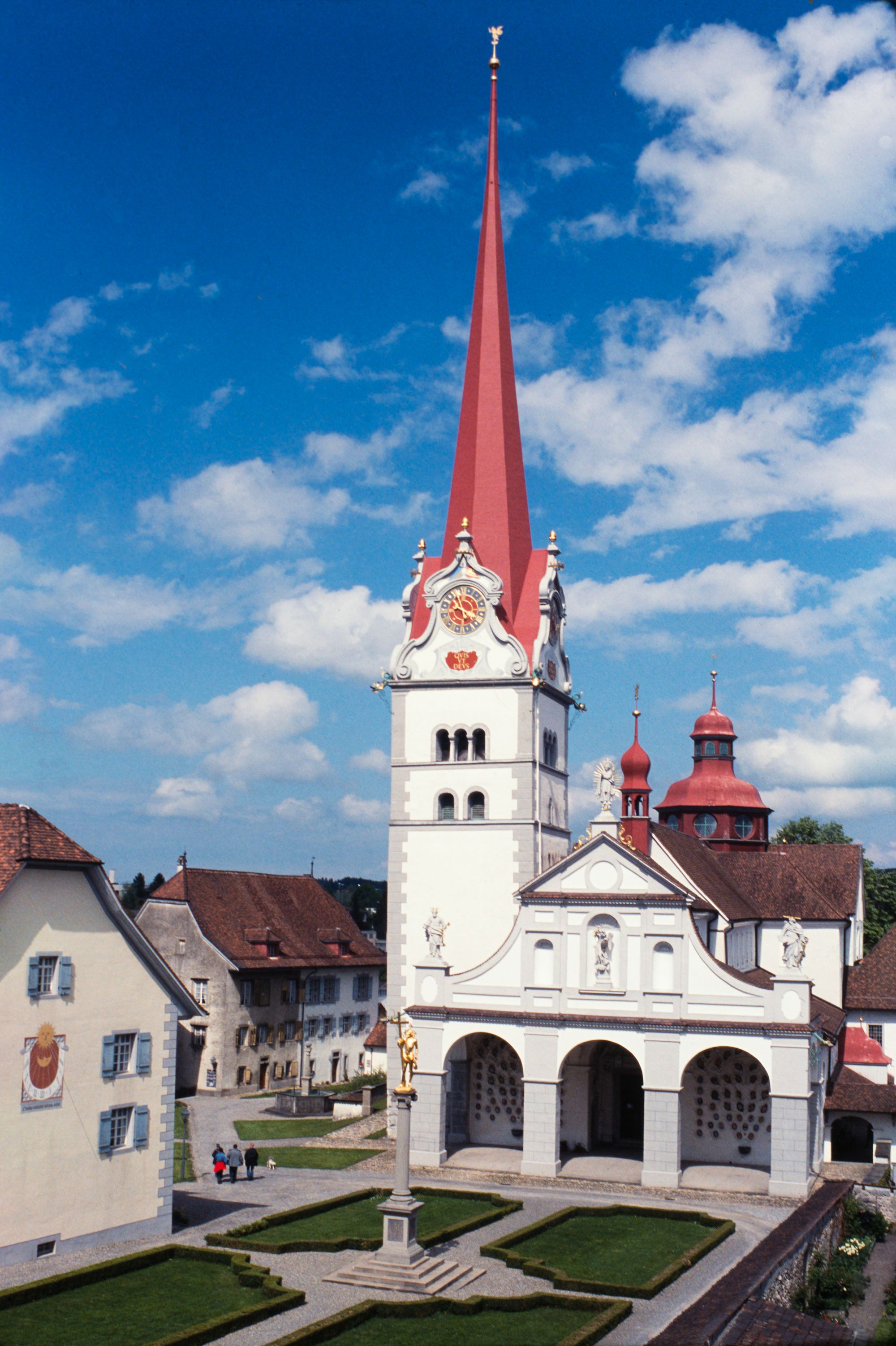
Beromünster, Stiftskirche St. Michael
Since the 10th century, there has been a church in Beromünster that has been home to a community of canons. It was established as a burial church for the Counts of Lenzburg. The current (second) church dates back to the 11th century. Several canons contributed to cultural life: in 1470 Helias Helye produced the first Swiss printed book, the Mammotrectus, an explanation of biblical expressions; in 1490/91 a Beromünster canon was Rector of the University of Basel; Franz Josef Stalder (1757-1833) devoted himself to research on dialects, as evidenced by his work „Versuch eines schweizerischen Idiotikons“ (Attempt at a Swiss ‘Idiotikon’ or dictionary). The archive and the monastery library contain numerous manuscripts; a catalog of these manuscripts does not yet exist but is under consideration.
Manuscripts list

Bulle, Musée gruérien
Ever since 1917, the Musée gruérien has been collecting, examining and highlighting the cultural heritage of the Gruyère region. The institution, which is known for its collection of objects and photographs as well as for its research and exhibitions, has important holdings of printed and handwritten documents. The items, for the most part unknown to the general public and even to specialists, are currently being inventoried: a collection of 307 original parchments dated from 1314 to 1842; notarial registers; administrative archives; bookkeeping and land registry records; correspondence; medieval incunabula and manuscripts. These often disconnected pieces make it possible to shed light on numerous historical episodes of Gruyères and of the Romandy. The collections are completed by the holdings of the Library of Bulle and the Municipal Archives of Bulle, located in the same building.
http://www.musee-gruerien.ch/
Manuscripts list
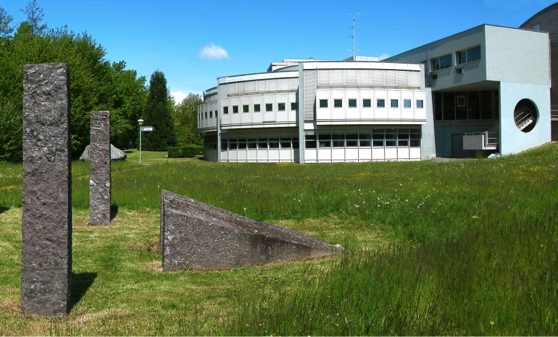
Chavannes-près-Renens, Archives cantonales vaudoises
The Cantonal Archives of Vaud, which have had a law governing archiving since June 14, 2011 (the first to have ever been adopted), conserve an extensive cultural heritage of documents, the first of which dates to the year 970. The concentration of this heritage can be explained by the early and constant reliance on the written word. The Reformation was introduced into Vaud in 1536 and resulted in the loss of almost all illuminated Catholic documents. Not until the middle of the 17th century can visual sources be found (the largest collection in Switzerland), resulting from the setting up of land registers (cadastre) and the mapping of the region. The « Archives vaudoises » (cantonal since 1803) were founded in 1789 as one of the first achievements resulting from the independence of Vaud. They precede all memory spaces that the canton has incrementally established since the beginning of the 19th century. Today the Cantonal Archives of Vaud are among the most important archives in Switzerland due to the extent and diversity of their holdings and also due to their number of visitors and to their positioning with regard to information processing in the digital age.
Manuscripts list

Chur, Cantonal Archives of Graubünden
The Cantonal Archives of Graubünden is the institution charged with the professional conservation, cataloguing and communication of the sustainable documentary heritage of the canton of Graubünden. It ensures the safekeeping of exceptional written cultural assets, for the most part unique examples, — from medieval parchment documents to 21st century electronic data — for the comprehensibility of government actions, for historical research and as a basis for cantonal and local identity. The most important holdings are the administrative records and government documents of the canton of Graubünden since 1803. The Cantonal Archives also holds the archives of the Free State of the Three Unions up until 1798 and the archives of the Helvetic Republic 1798-1803. Valuable additions to these official documents come from numerous holdings from non-governmental sources, such as bequests and family, company or association archives. In addition, there are extensive collections of documents, photographs and maps.
Manuscripts list
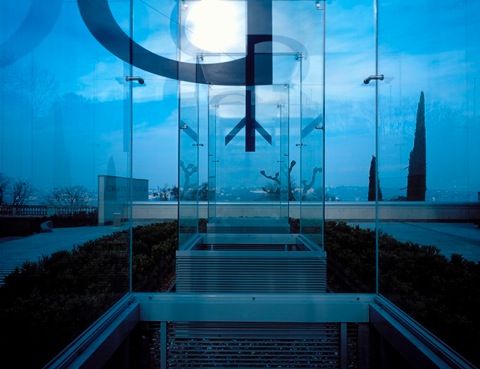
Cologny, Fondation Martin Bodmer
The Fondation Martin Bodmer is one of the most important private libraries in the world. It seeks to reflect the “adventure of the human spirit” since the beginning of writing; in this it follows the example of its founder Martin Bodmer, who sought to set up a “library of world literature.” The collection comprises about 160,000 items, hundreds of Western and Eastern manuscripts, Egyptian Books of the Dead, 270 incunabula including a rare exemplar of the Gutenberg Bible, autographs by Goethe, Einstein and Mozart...
Manuscripts list
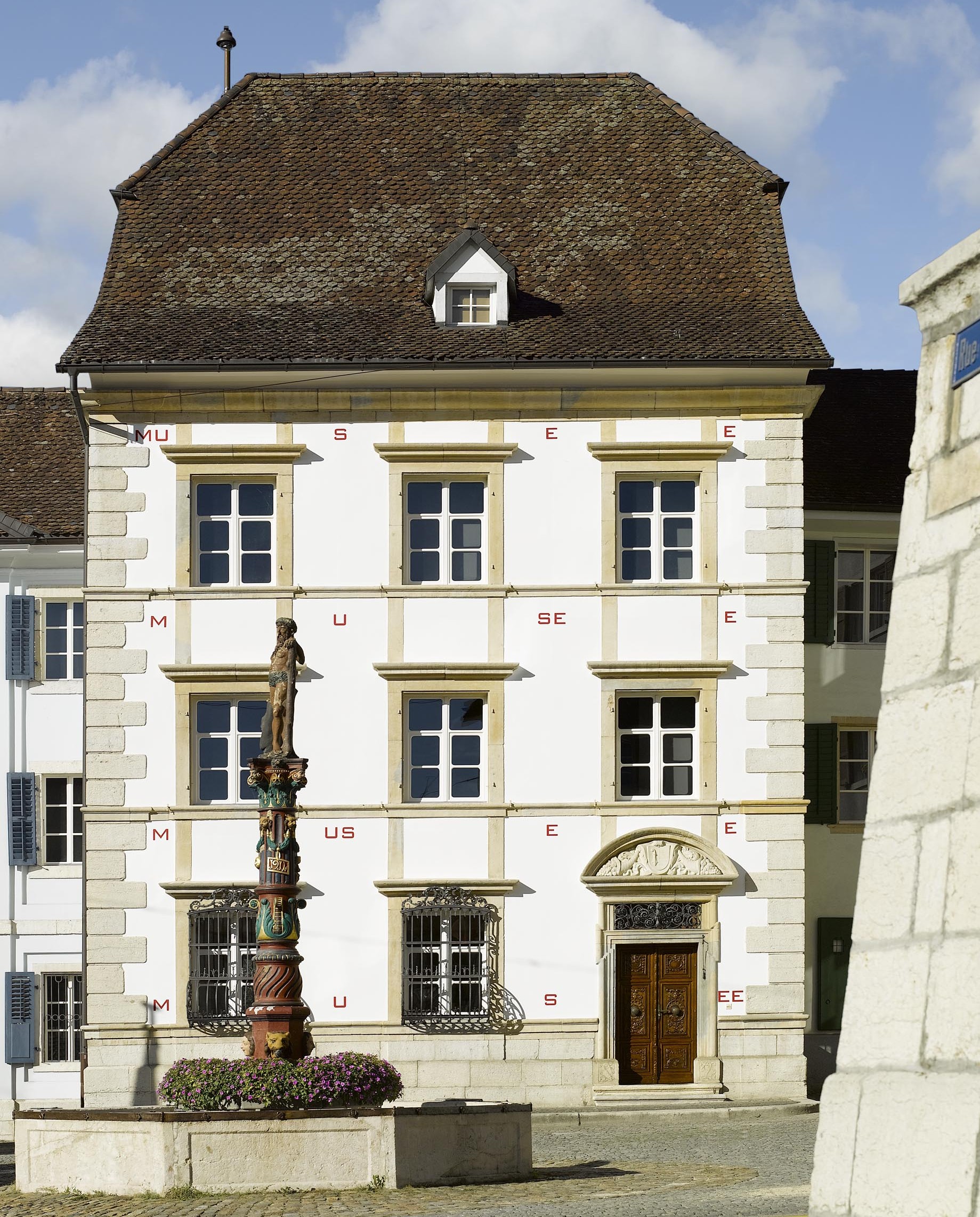
Delémont, Musée jurassien d'art et d'histoire
Founded in 1909, the Musée jurassien d’art et d’histoire (the Museum of Art and History of the Jura) sees its mission as passing on to future generations the preserved assets of the heritage of the Jura (territory of the former bishopric of Basel), to enhance them, and to take part in current cultural and social life. The museum's collections consist of more than 30,000 objects, works, or collections, several of which themselves consist of several hundreds or thousands of pieces. The variety of objects is great: church treasure, sculptures, paintings, prints, drawings, photographs, maps, charts, parchments, manuscripts, archives, objects from political and military life, coins and medals, archeological finds, and witnesses of everyday life. Find out more about the museum here: www.mjah.ch
Manuscripts list
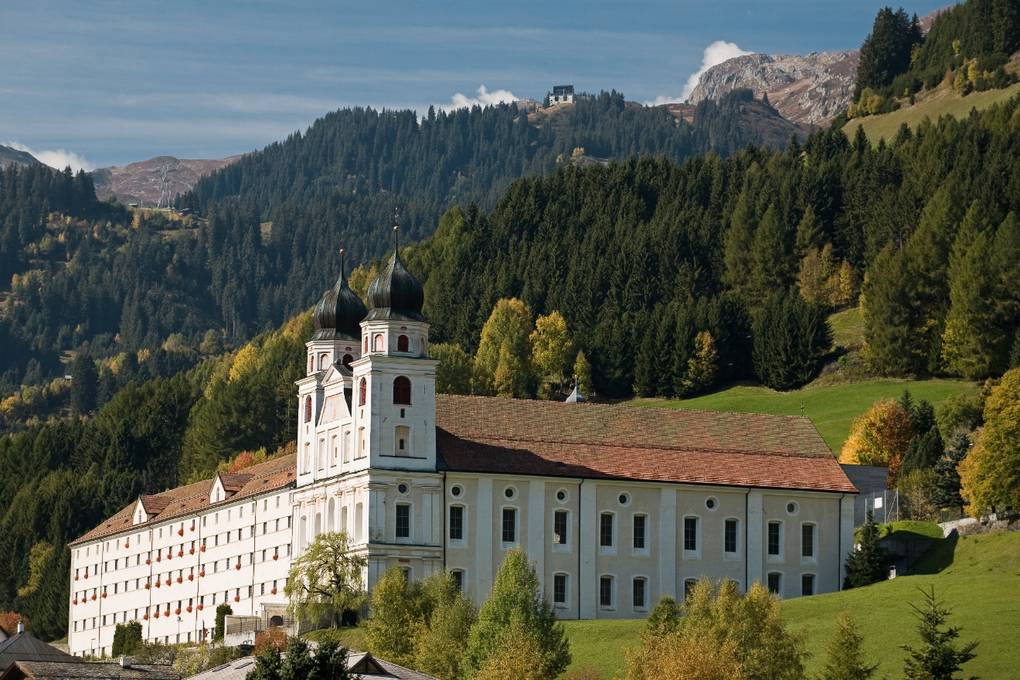
Disentis, Romansh library of Disentis Abbey
Disentis Abbey has various libraries and archives; the best-known among them is the Romansh library, which contains mostly works in Sursilvan, including unique items. However, the significance of this library is above all due to its about 680 manuscripts and miscellanies from all of the Romansh-speaking areas, from the end of the 16th to the middle of the 20th century. The oldest are from the collection of Caspar Decurtins, who used them for his edition of the «Rätoromanische Chrestomathie» (ca. 80 manuscripts). Therefore many old Engadine texts are included; the old Sursilvan manuscripts were irretrievably lost in 1799, when the French burned down the monastery.
Manuscripts list
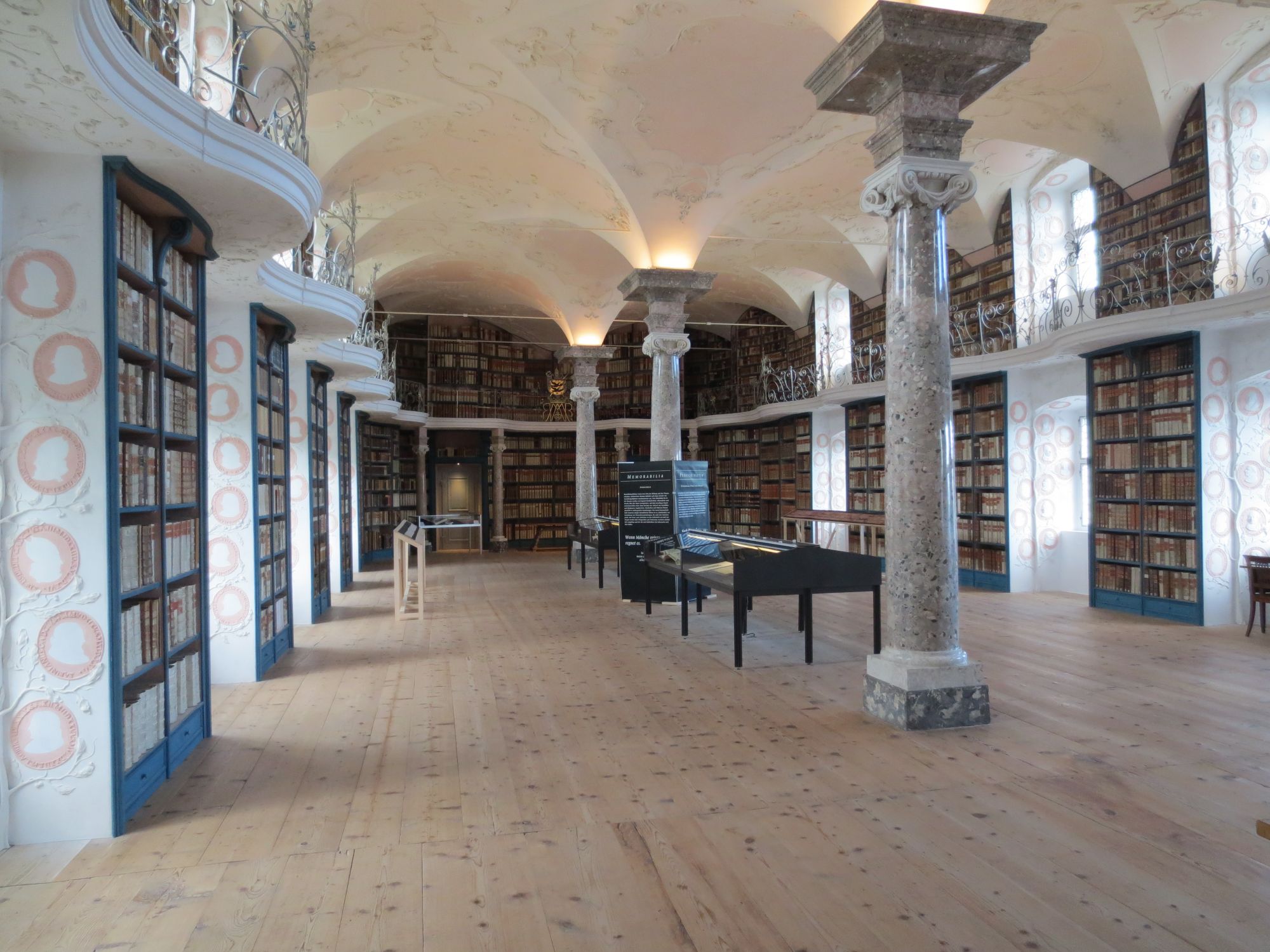
Einsiedeln, Stiftsbibliothek
The Abbey Library of Einsiedeln is rightfully considered a typical monastery library. Around the Holy Scripture as its center point are arranged the spiritual, theological sciences in an inner circle, around these in an outer circle are arranged all other sciences, from history, philosophy and jurisprudence to the natural sciences and medicine. Such comprehensive breadth was already documented in manuscripts from the early days of the monastery, as well as in ones from the so-called historical collection of the post-Reformation period, and the same remains true today for the modern library.
The abbey library’s collection today includes about 1,200 manuscripts (of these about 580 are from before 1500), 1,100 incunabula and early printed works (until 1520), and 230,000 printed volumes from the 16th to the 21st century. Numerous current journals and periodicals offer the most up-to-date research from a large variety of disciplines.
Manuscripts list

Engelberg, Stiftsbibliothek
The Benedictine Abbey of Engelberg was founded in 1120; its library’s collection of manuscripts, incunabula, and historical and modern books has continually grown since that time. The library holds a total of about 135,000 volumes; of its 1,000 manuscripts, about 270 are medieval. The cornerstone for the library was laid under Abbot Frowin (1147-1178) and his successors Berchtold (1178-1197) and Heinrich (1197-1223). Frowin commissioned at least 34 manuscripts. In addition to the obligatory Church Fathers, then-modern authors such as Hugh of Saint Victor and Bernard of Clairvaux were also included. In the 14th century, the manuscript library experienced a late blossoming with texts about prayer and mysticism. The library’s earliest printed works are a two volume German Bible printed by Heinrich Eggestein in Strasbourg in 1470 at the latest, and the Mammotrectus super bibliam by Johannes Marchenius, printed by Helyas Helyae in Beromünster in 1470.
Manuscripts list
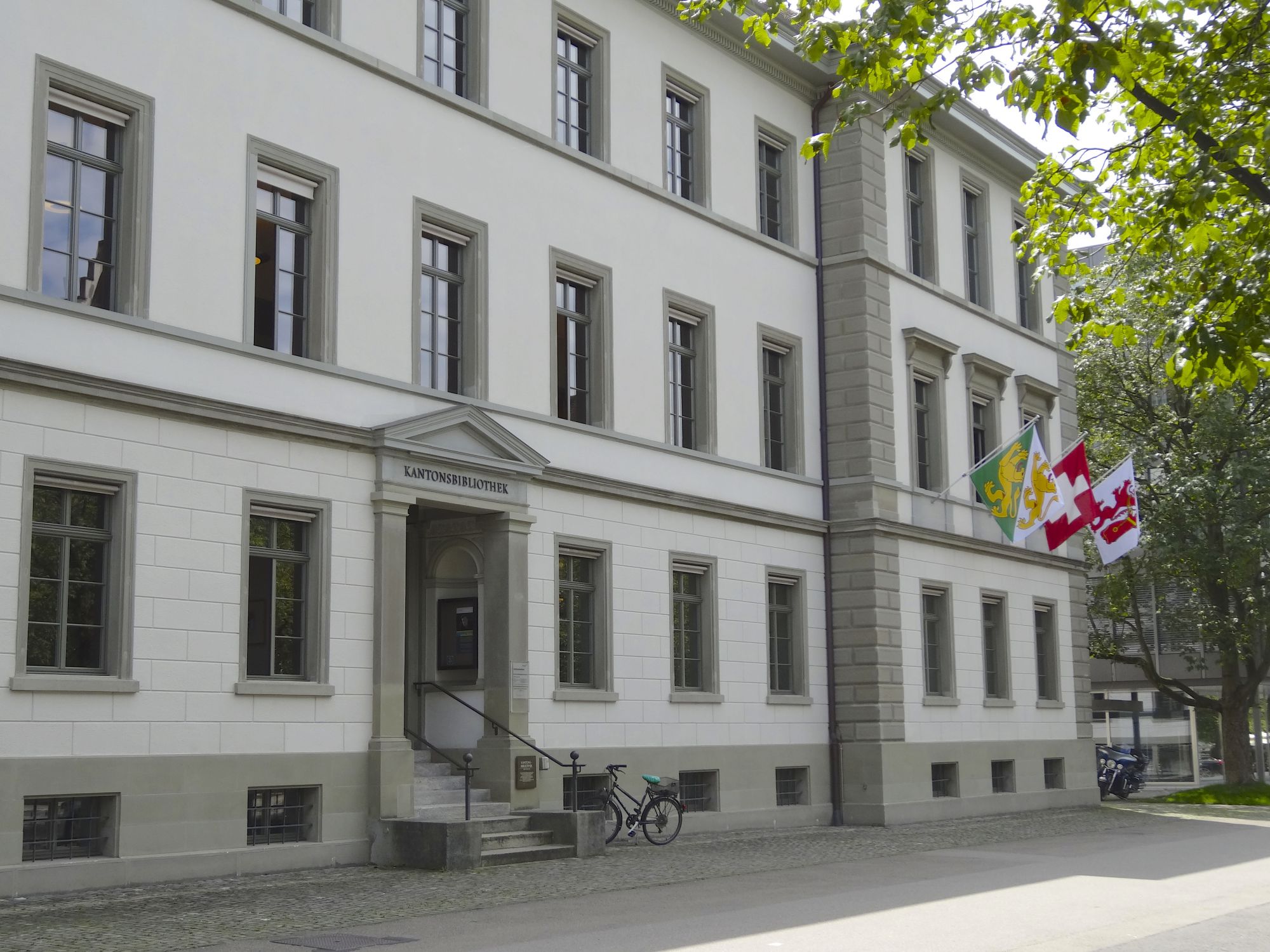
Frauenfeld, Kantonsbibliothek Thurgau
The Cantonal Library of Thurgau was founded in 1805 as a resource library for the administration. Today the Cantonal Library is a modern educational and cultural institution that is open to all age groups and all segments of the population. The core of the Cantonal Library and a part of the collective memory of the canton is the historical holdings and collections, including the Thurgoviana, all literature pertaining to the Canton of Thurgau.
A large part of the older holdings, including numerous manuscripts, incunabula and post-incunabula, became part of the Cantonal Library after the dissolution of the Thurgau Abbeys (Fischingen, Ittingen, Kreuzlingen) in 1848. Among these are, for instance, liturgical literature going back to the 13th century as well as the abbey chronicle by Heinrich Murers (1588-1638). Further historical holdings from the 16th to the 19th century encompass all areas of knowledge.
Manuscripts list
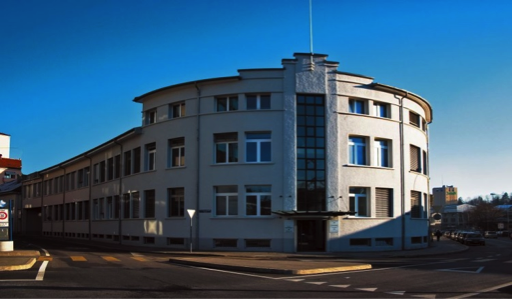
Fribourg/Freiburg, Archives de l'Etat de Fribourg/Staatsarchiv Freiburg
The State Archives of Fribourg (StAF) is a cultural institution as well as a central service of the State of Fribourg that is part of the administrative units under the State Chancellery, with which the State Archives has been closely linked since at least the 14th century. The StAF has extensive holdings from the Middle Ages and the Ancien Régime, since the archives of the city republic become those of the canton. The territorial sovereignty of Fribourg encompassing the older areas (parishes surrounding the city) extended over the centuries through purchases, conquests or distraints. The archive was thus enriched with documents from these baronies (often former seigniories of Savoy that had been set up as bailiwicks), as well as from monasteries and chapters, although some of these religious communities had already been dissolved during the Ancien Régime. For the other communities, it wasn’t until the collapse of the radical regime in 1857 that an agreement was reached: The religious orders for men (Hauterive, Marsens-Humilimont etc.) donated their archives from before 1850 to the StAF, the orders for women (Maigrauge, Fille-Dieu etc.) retained full or partial ownership of their archives. In 1963 the StAF received the holdings of the Cathedral Chapter of Saint Nicholas (documents from before 1860, antiphonaries, handbooks, correspondence).
Manuscripts list

Fribourg/Freiburg, Bibliothèque cantonale et universitaire/Kantons- und Universitätsbibliothek
Fribourg's Cantonal and University Library owns a significant collection of manuscripts dating from the Middle Ages to the present day, archival holdings and incunabula. This collection comes primarily from the religious communities of Fribourg that were dissolved in 1848, notably from the Cistercians of Hauterive, from the Augustinian Hermits and the Jesuits of St. Michael in Fribourg, and from the Carthusians of La Part-Dieu. The collection includes 185 medieval manuscripts. Over time the collection was significantly expanded through purchases and donations, such as the manuscripts from the Capuchin Convent and those of the Société de lecture (formerly Société économique). The library’s website offers a complete and detailed presentation.
Manuscripts list
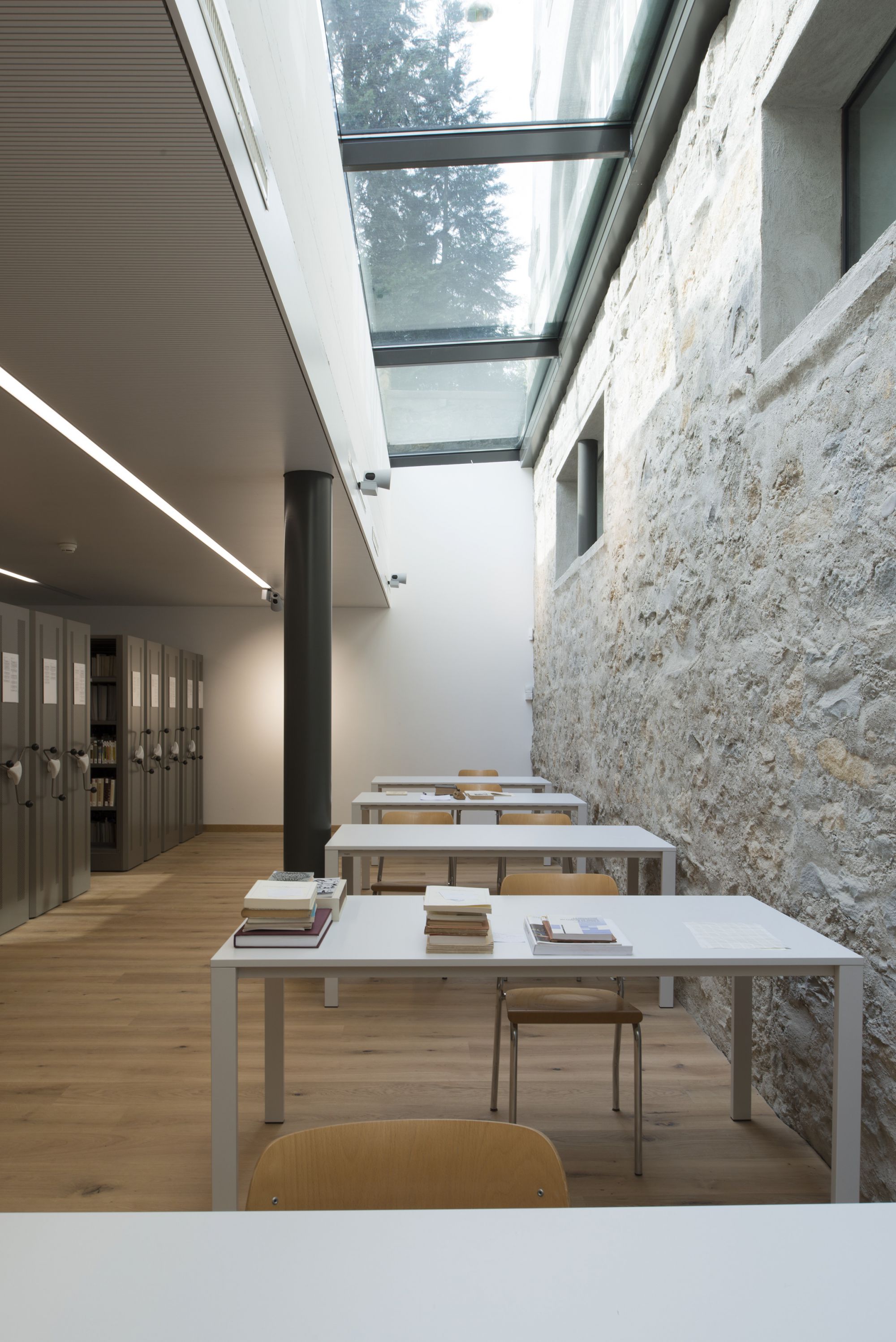
Fribourg/Freiburg, Couvent des Cordeliers/Franziskanerkloster
The library of the Franciscan Monastery is a private library; it joined RERO (the network of libraries of Western Switzerland and union catalog) in 2013. The library contains about 35,000 volumes, 10,000 of which date from before 1900. The majority of the books can be accessed via a card catalog.
The old library can be traced back to Guardian Friedrich von Amberg; 18 of his volumes have been preserved. During the monastery’s golden age in the 15th century, the superiors collected mainly sermon and study literature. The Franciscan Monastery was able to preserve its library on site; it contains 80 medieval and 100 post-medieval volumes of manuscripts (not catalogued), as well as 136 incunabula and 80 post-incunabula.
Manuscripts list

Genève, Bibliothèque de Genève
Formally created just after the founding of the Collège and Académie de Genève by John Calvin in 1559, the Bibliothèque is historically the dean of Geneva’s cultural institutions. In succession the institution was known as the Bibliothèque de l’Académie (the Academy library) in the 16th century; the Bibliothèque publique (the Public library) in the 18th century; the Bibliothèque publique et universitaire (the Public and university library) throughout the 20th century; and finally the Bibliothèque de Genève since 2006. Located in the Parc des Bastions since 1873, the Bibliothèque de Genève was entrusted with a number of collections over the course of the 20th century, viz., the La Grange library in 1917; the Institut et Musée Voltaire (the present-day Musée Voltaire) in 1973; the Bibliothèque musicale (La Musicale today) in 1998; and, in the 21st century, the Vieux Genève, or Old Geneva, collections (Musée d’art et d’histoire de Genève) in 2008.
Manuscripts list
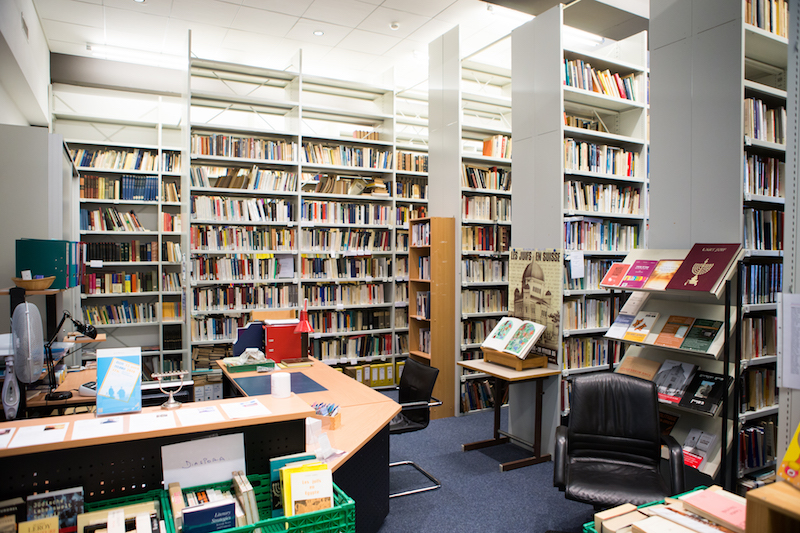
Genève, La Bibliothèque juive « Gérard Nordmann »
The library “Gérard Nordmann“ is the only Romandy public library specializing in Judaica and Hebraica; its collection contains about 30,000 books and other printed documents. The library was founded in 1945 and, thanks to permanent efforts regarding new acquisitions, its collection features a great variety of languages (Hebrew, Aramaic, Ladino, Yiddish, Latin, Spanish, French, English, German) and themes (rabbinic and liturgic literature, literature, history, philosophy and contemporary sociology). In particular, it houses the private library of Rabbi Chaim Lauer, chief rabbi of Mannheim and later of Biel/Bienne; this collection is rich in rabbinic literature and in German pre-war judaica. It also includes the Sefer Nehmad ve Naïm (Prague, 1613), an exceptionally valuable manuscript by Rabbi David Gans. The library is listed in the Swiss Inventory of Cultural Property of National and Regional Significance. It is located on the first floor of the Jewish Community of Geneva and is open to the public.
Manuscripts list

Hermetschwil, Frauenkloster St. Martin
Hermetschwil Convent is the female part of the original double monastery of Muri; the date of their separation is not clear. The presence of the community at Hermetschwil is attested from the end of the 12th century. The convent was dissolved in 1841, reinstated in 1843, and dissolved again in 1876. The community continued to exist at Hermetschwil and, thanks to the transfer of the abbey to Habsthal in Württemberg, was able to continue its monastic life. In 1985, a new abbess was elected in Hermetschwil, in 1986 the two communities separated. Before the dissolution of the convent in 1876, the nuns entrusted their medieval and early modern manuscripts to Muri-Gries Abbey in order to to protect them from confiscation by the Canton of Aargau. Only in 2016 were the manuscripts returned to the nuns.
Manuscripts list
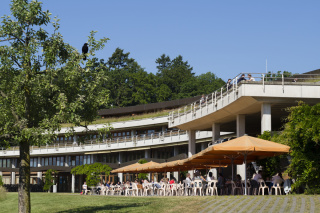
Lausanne, Bibliothèque cantonale et universitaire - Lausanne
The manuscript department of the BCU Lausanne (Cantonal and University Library of Lausanne) acquires and conserves large collections of handwritten and typed documents, as well as the documentation pertaining thereto. The holdings consist of over 600 collections about personalities from the areas of culture and science as well as from associations from or with a relation to the Canton of Vaud. About twenty medieval manuscripts, more than 4,000 old maps, and a large number of photographs covering various topics complete the collection.
Manuscripts list
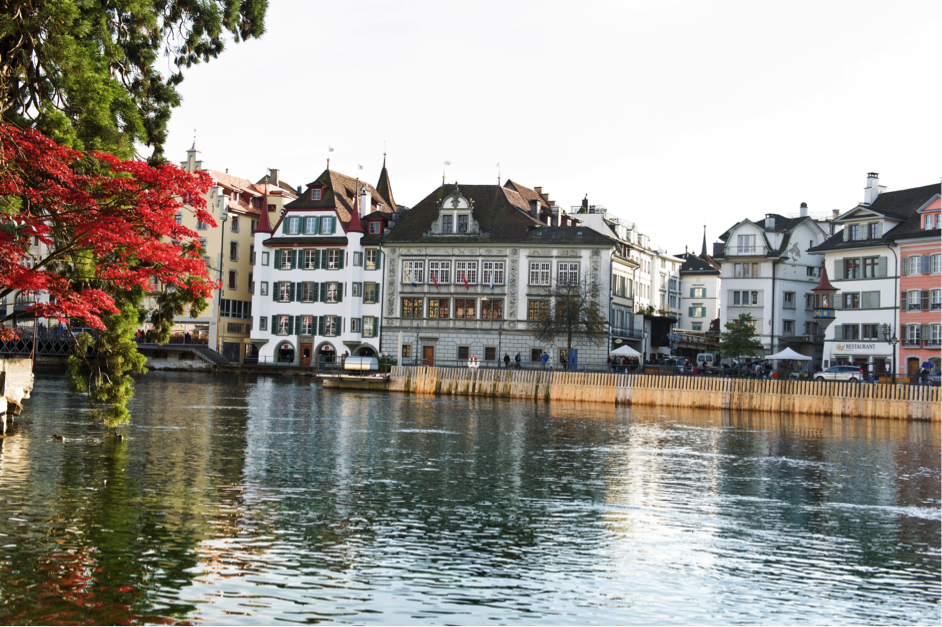
Luzern, Korporation Luzern
The cultural property of the Lucerne Corporation
After the French Revolution, the Diebold Schilling Chronicle, over 100,000 books, about 240,000 plans, drawings and pictures, an extensive coin collection and the Relief of Central Switzerland by Franz Ludwig Pfyffer von Wyher came into the possession of the Lucerne Corporation. All of these cultural assets today are held on permanent loan by the Central and University Library, the historical museum and the Glacier Garden, while the Lucerne Corporation is and remains the owner. After two facsimile editions produced in the last century, in 2015 the Diebold Schilling Chronicle at the Central and University Library was made accessible to the public at large via e-codices. The Relief of Central Switzerland, a feat of engineering accurate to the millimeter, can be seen at the Glacier Garden and is considered the museum’s most valuable exhibit.
Manuscripts list

Luzern, Provinzarchiv Schweizer Kapuziner Luzern
Kaspar Pfyffer von Altishofen (1524-1616), knight of the Order of the Holy Sepulchre was the donor and benefactor of the Capuchin monastery that was completed in 1588 along with the pilgrimage church Maria der Engel on the Wesemlin in Lucerne. He also gave the Capuchins an extensive collection of books, which he had bought from the secular priest Lienhart Rissi from Willisau, who had converted to the reformed confession. This collection constitutes the core of the continually expanding Capuchin Library (18,520 volumes, of which 450 are incunabula). During the Reformation and the Counter-Reformation, the library served the Capuchins, as well as the nuncios residing in Lucerne, whose donations of books are reflected in the holdings. Together with the “Provinzarchiv Schweizer Kapuziner” (Provincial Archives of Swiss Capuchins), also maintained in the Wesemlin monastery since 1589, it is an important memory of the Franciscan reformed mendicant order with an international orientation: since 1589, the Lucerne monastery has also been the seat of the provincial ministers, whose provinces extended into Vorderösterreich (Further Austria) and the Upper Rhine Plain as well as into Alsace. The provincial archive, with its rich documentation of written material, primarily of Swiss Capuchins, also transmits the traditions of the Friars Minor Conventuals since the Middle Ages, such as papal bulls and manuscripts of legends.
Manuscripts list
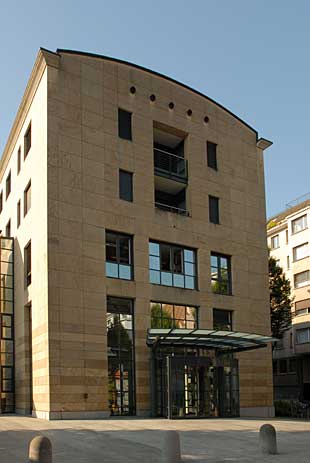
Luzern, Staatsarchiv Luzern
According to their statutory mandate, the State Archives of Lucerne are responsible for communicating information about all cantonal bodies and institutions; thus they make a central contribution to the rule of law. They also preserve documents from about 900 years of municipal and cantonal history. In addition to sources resulting from state activities, the holdings also contain the archives of monasteries in the area of the canton that were abolished in the 19th century, and numerous archives from non-state entities (private persons, families, associations and organizations, companies, etc.).
Manuscripts list
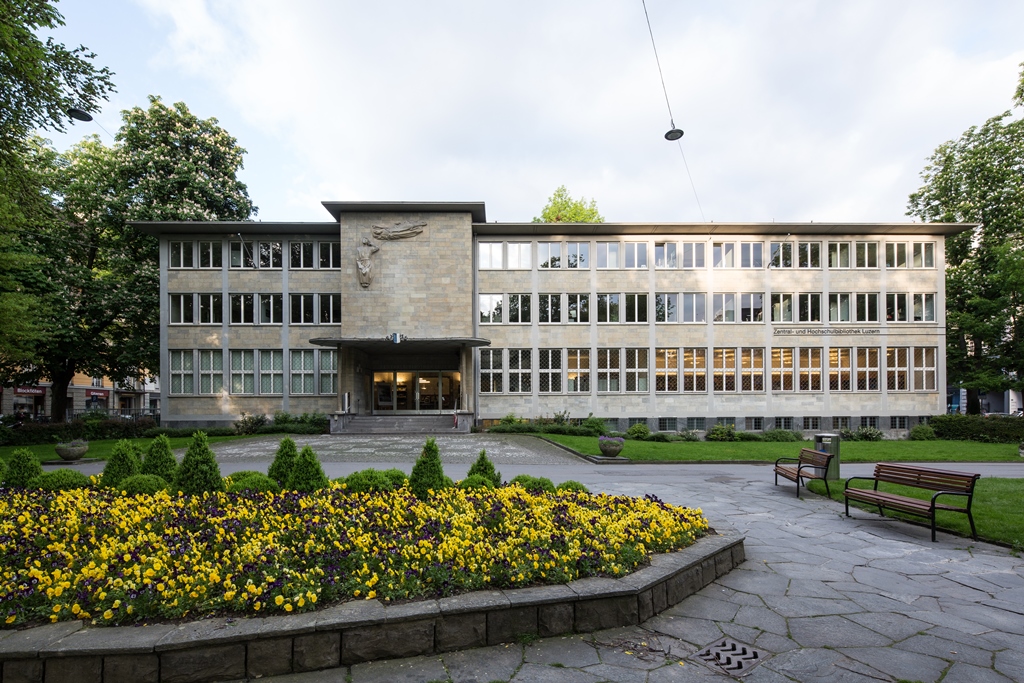
Luzern, Zentral- und Hochschulbibliothek
The Central and University Library (ZHB) of Lucerne is the library service center for the University of Lucerne, the Lucerne University of Applied Sciences and Arts (FH Zentralschweiz), the University of Teacher Education Lucerne (PH Luzern) and for the Lucerne public. It offers a broad selection of scholarly literature and electronic resources. As a cantonal library, it is a significant part of the collective memory of the canton. The library collects, preserves and makes accessible: medieval and modern manuscripts, historical printed works, extensive collections of graphic arts and photographs, maps, bequests of musicians and composers, and audio and video recordings. The collection of medieval manuscripts contains 182 codices, mainly from the former Lucerne monasteries St. Urban (Cistercians) and St. Maria in der Au (Franciscans), as well as from the Jesuit College. The ZHB Lucerne makes available select medieval manuscripts on e-codices for researchers and for the interested public.
Manuscripts list

Mariastein, Klosterbibliothek
The Mariastein Abbey Library reflects the history of the Benedictine Abbey of Beinwil-Mariastein. The Benedictine Beinwil Abbey, founded around 1100, was dissolved in 1544. With the revival of Benedictine life at Beinwil in 1589 through monks from Einsiedeln Abbey and in 1622 from Rheinau Abbey, books were again acquired. In 1648 these were transferred to Mariastein when the abbey moved its seat to the Marian pilgrimage site Mariastein. These books were not medieval works from the old Beinwil Abbey Library, but rather works that were acquired after the re-founding of the abbey. The extension of the abbey at the pilgrimage site Mariastein led to an expansion of the library's holding of books: theology, canon law and philosophy for the internal theological-philosophical school, as well as history, natural sciences, art and music for the abbey’s secondary school became the focus of the collection of the Mariastein Abbey Library from 1648 on. Due to the French invasion in May 1798, the holdings were seriously depleted. Nevertheless, more than 500 volumes survived the Revolution, among them about 20 incunabula and more than 50 early prints. Under Abbot Plazidus Ackermann, the abbey library grew quickly: by 1825 it contained over 2,000 works. In addition to new publications, important missing works were acquired from antiquarian book dealers and through donations. As a consequence of this increase in books, a new wing was added to the library in 1841. On 18 September 1874, the council of the Canton of Solothurn decided on the “reorganization” (i.e., dissolution) of Mariastein Abbey. The library was sealed and forwarded to Solothurn, where it was awarded to the cantonal library, founded in 1882, which became the Zentralbibliothek (Central Library) Solothurn in 1930. In 1998, ownership of the “old abbey library from before 1874” was returned to the abbey; it includes manuscripts that have been published on e-codices.
Manuscripts list

Montreux, Bibliotheca Sefarad
The Bibliotheca Sefarad is a digital library of bibliographic references about Jewish culture specializing in Judaism, Sephardism and the Inquisition; it is based in Switzerland and Spain. This eclectic collection was conceived in the spirit of the Enlightenment and was created on the basis of a private collection of manuscripts, books, journals and printed documents. The collection continues to be enriched through new acquisitions as well as through thematic exhibitions, which can be explored on the website. A detailed bibliographic guide for its over 15,000 documents is available at bibliothecasefarad.com.
Manuscripts list

Müstair, Benediktinerkloster
The extensive holdings of the abbey archives of Müstair go back to the 8th/9th century. The early medieval archive documents are valuable manuscript fragments, among them excerpts from the old and new testaments, the homilies of Gregory the Great and a cartulary, which is probably episcopal. Most likely these fragments are the remainder of the oldest library, which presumably was mostly destroyed by fire. Archive documents regarding the abbey itself have survived from the 12th century, which is after the change in occupancy from monks to nuns. Among these is a large collection of documents and urbaria, which provide information about the abbey’s possessions and rights. Also important are the abbey statutes and visitation records, as well as many practical-theological writings, which offer insights into the disciplinary situation and the spiritual life of the abbey. In addition, various other source materials, such as profession documents and dowry contracts, provide valuable biographical information about the individual conventuals.
Manuscripts list
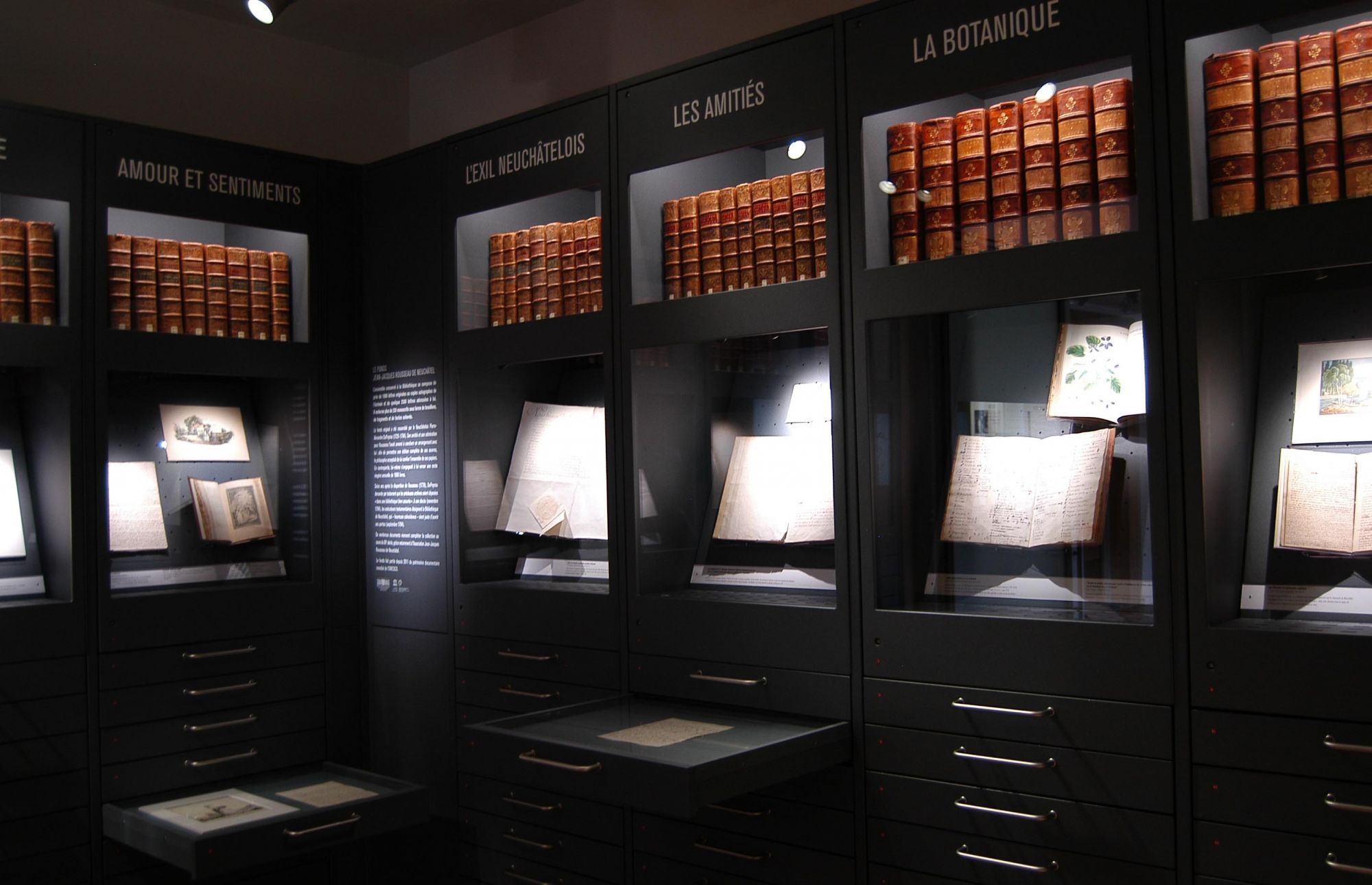
Neuchâtel, Bibliothèque publique et universitaire de Neuchâtel
The Public and University Library of Neuchâtel was founded in 1788. It offers a freely accessible public reading room and a research area (fonds d’étude, private archives and manuscripts, antique books, iconography, journals, Neuchâtel dossiers).
The private archives and manuscripts contain approximately 170 items from associations, companies and figures connected with the city of Neuchâtel, among them the renowned Jean-Jacques Rousseau collection. About 1,000 manuscripts dating from the 9th to the 11th century about the history of Neuchâtel, theology, law and literature constitute an interesting corpus of sources for research. The culinary sector is well represented with numerous recipe books for cooking and for medicinal remedies, as is music with a set of scores from the 18th century.
Manuscripts list
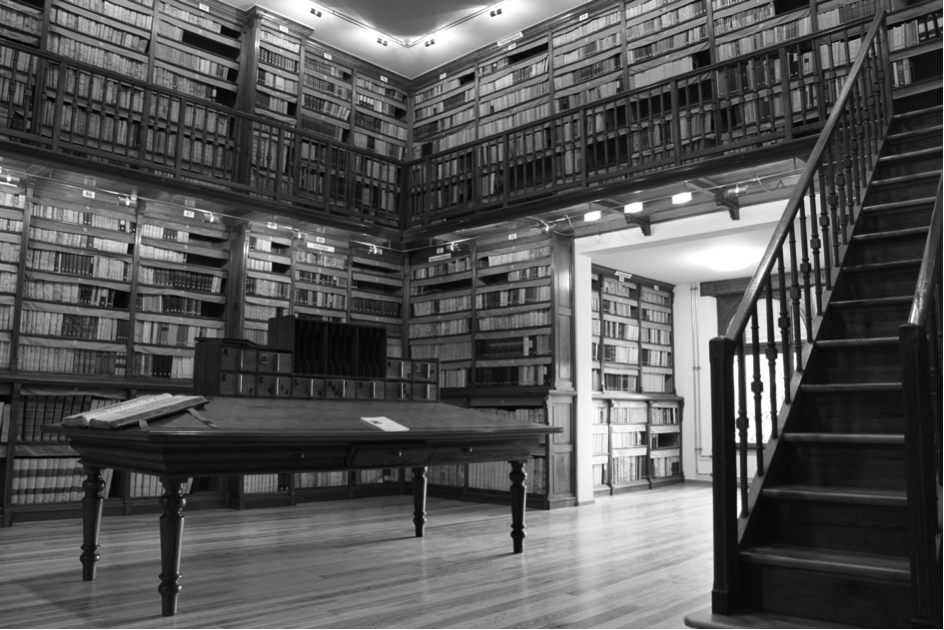
Orselina, Convento della Madonna del Sasso
The library of the Monastery of Madonna del Sasso in Orselina brings together the remaining holdings (about 14,000 volumes) of four collections of antique books: from the monastery of San Francesco in Locarno, founded around 1230; from the Franciscans of Madonna del Sasso (about 1480); from the Capuchins of San Rocco of Locarno (1602); and finally the remaining holdings from the Capuchins who moved to Orselina in 1848. The collection is rich in 16th century editions (about 500) and contains 33 incunabula and around 30 postincunabula. In addition, it conserves four medieval manuscripts which originated in the monastery of San Francesco in Locarno and are the property of the canton of Ticino.
Manuscripts list
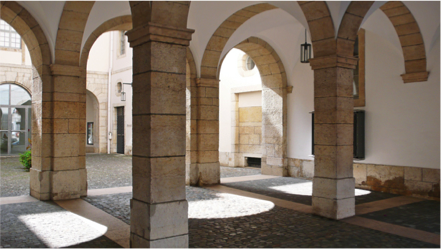
Porrentruy, Archives cantonales jurassiennes
The principal tasks of the State Archives Jura are:
- the traceability of the state’s actions;
- the state of the archival holdings;
- access to information for citizens.
"L'accès le plus large aux archives doit être maintenu et encouragé pour l'accroissement des connaissances, le maintien et l'avancement de la démocratie et des droits de la personne, la qualité de vie des citoyens". (Déclaration universelle sur les archives – Oslo, 2010).
The State Archives Jura are the youngest of Switzerland’s cantonal archives. The current holdings take up about 4km of shelf space and are mainly from the 19th and the 20th century. They concern the period of administration by Bern (1815-1978), that of the administration by Jura (since 1979), as well as private archives from people, companies, societies and associations (about 100 private collections).
www.jura.ch/arcj
Manuscripts list

Porrentruy, Bibliothèque cantonale jurassienne
The Cantonal Library of the Jura was founded in 1982. It has a twofold mandate: it is a center for study and for culture in general and also a center for the creation and appreciation of the cultural heritage of the Jura. The old holdings of the Cantonal Library of the Jura bring together works that came from the former library of the Jesuit college of Porrentruy, from succeeding institutions of higher learning, and from collections of diverse origins. The old holdings belong to the municipality of Porrentruy, which ceded it for conservation to the young Canton of Jura. The canton in turn entrusted the management of the holdings to the Cantonal Library of the Jura. The old holdings consist of about 10,500 titles, corresponding to about 19,000 volumes, the greatest part of which were printed in the 17th and 18th centuries. In addition there are 216 incunabula and 293 postincunabula, as well as more than 300 manuscripts, of which about thirty are medieval manuscripts.
Manuscripts list

Romont, Archives of the Abbey De La Fille-Dieu
The Cistercian Abbey De La Fille-Dieu was founded on the outskirts of the town of Romont in 1268 by Juliette de Villa; today it remains the only active monastery there. The convent conserves significant archival holdings from the Middle Ages up to the present. In particular, the collection contains annotated liturgical fragments that are of great significance for the history of Cistercian chant. These manuscripts go back to 1136/1140; they contain the chant of the early Cistercian office from the time of St. Bernard of Clairvaux. These drafts of the Bernardine reform are probably from Hautcrêt, the monastery that became the motherhouse of Fille-Dieu during the Middle Ages. The musical collection is complemented by manuscripts that were copied by the nuns of Fille-Dieu or were purchased, as well as by precious polyphonic prints. Among these are four little-known composite manuscripts of Franco-Flemish authors that were printed in Paris by Pierre Attaingnant between 1545 and 1550, as well as the Harmonicorum Florum by Benedict Rüegg (Wettingen, 1701). All muscial liturgical sources, manuscripts and prints were recently catalogued and described by Alicia Scarcez.
Manuscripts list
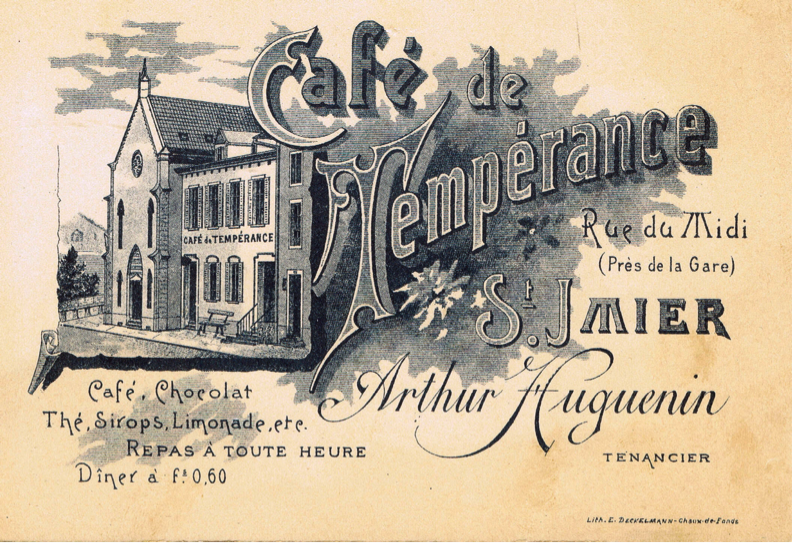
Saint-Imier, Mémoires d'Ici
Founded in the year 2000, Mémoires d’Ici has the twofold mission of preserving and showcasing the historic and cultural heritage of the Bernese Jura. The Canton of Bern has charged the private foundation with fulfilling public tasks as defined in a performance agreement. Its library offers about 8,000 works, 500 periodicals and nearly a thousand files of documents that specifically relate to this region. Its collection of images contains more than 300,000 photographs in addition to films and sound recordings. Its extensive holdings of private and association archives are important sources for understanding the history of the region.
Manuscripts list
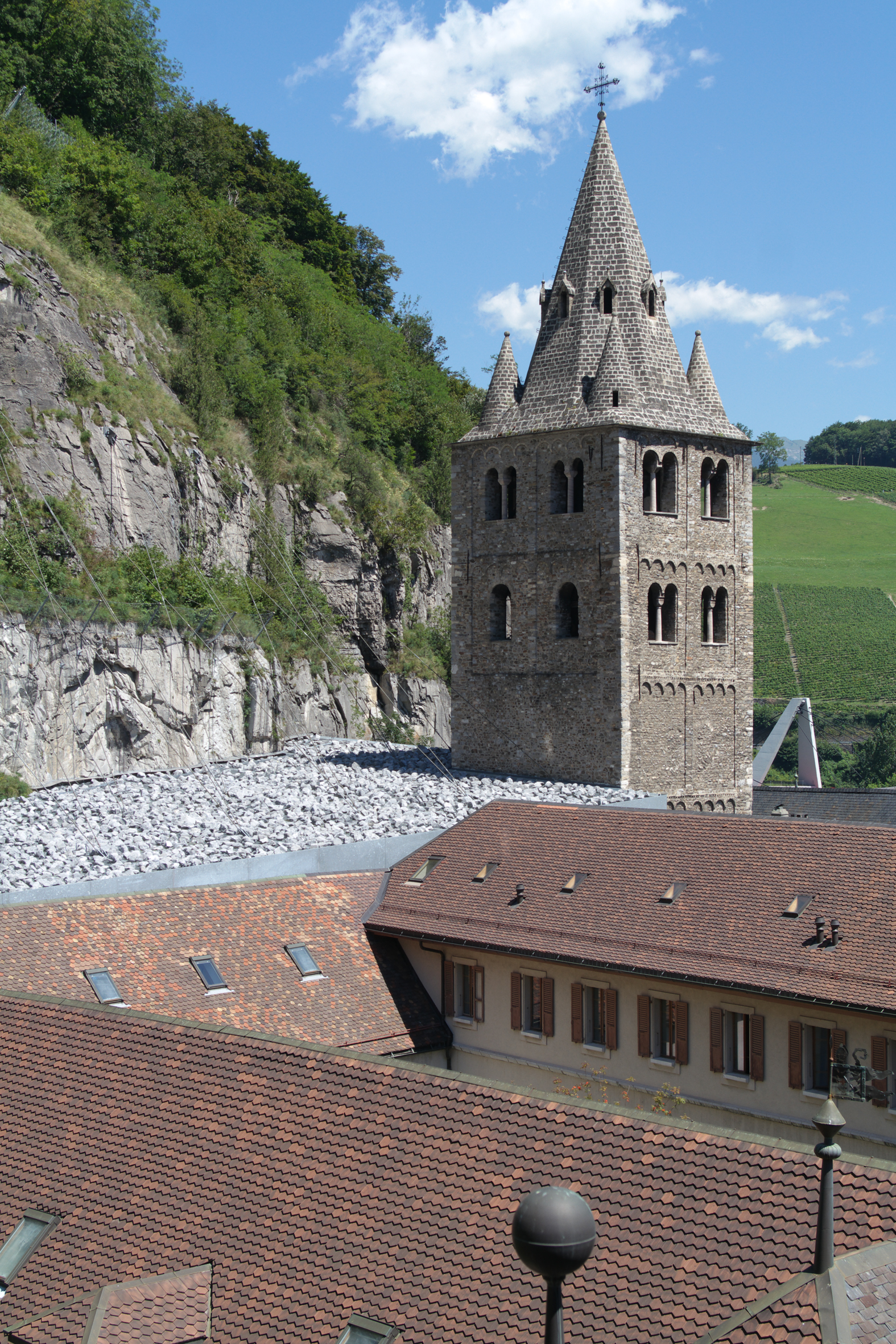
Saint-Maurice, Abbaye de Saint-Maurice
The Abbey of St. Maurice preserves important archival holdings, the oldest of which date to the 10th century. Since then, the documents produced by the canons, by the administration and by the management of the parishes and dependencies have been carefully preserved. The archives bear witness to the organization and operation of the abbey; they attest to its heritage and public interest. Since the beginning of the 18th century, the archives have been preserved in the same place where they still are located. Because in the year 2000, the abbey decided to open this important historic and cultural heritage to the public, the whole of the archives has now been treated for preservation, inventoried, digitized and made freely accessible on the internet site www.aasm.ch. The abbey’s most important manuscripts can be found in the series AASM/DIV .
Manuscripts list

Samedan, Chesa Planta Samedan
The Romansh library holds a large collection of Romansh literature from the beginning of the 1560s up to today, as well as of Rhaetian culture and Romansh linguistics. The manuscript department consists of about 560 manuscripts and manuscript conglomerates of literary and legal texts, mostly in Engadin, but also in Latin and German. The purchase of the private library of the Romansh writer Peider Lansel (1863-1943) provided the original stock for the library. A second collection contains the holdings of the former inhabitants of the Chesa Planta, the Salis and Planta families, which were collected over four centuries. However, these holdings are not yet publicly available; they will be made accessible in the near future. The library also contains important music manuscripts from the Planta, Salis and Wietzel families, especially some in old German lute tabulature.
Manuscripts list

Sarnen, Benediktinerkollegium
The Benedictine College of Sarnen is part of the Abbey Muri-Gries. After the Canton of Aargau dissolved the Monastery of Saint Martin in Muri in 1841, several monks took over the Latin school of the Canton of Obwalden. Thanks to the support of the imperial family of the Austrian Habsburgs, from 1845 on Muri Abbey continued in Gries near Bolzano. The community in Sarnen remained as an outpost of the Abbey. In the second half of the 19th century, it developed into a Benedictine boarding school.The library is primarily a collection to serve the needs of the faculty. After World War I it also became the location where all that remained in the community’s possession from the old Muri Abbey was collected and conserved.
Manuscripts list

Sarnen, Staatsarchiv Obwalden
The State Archives of Obwalden collects, preserves, makes accessible and communicates the articles of cultural value, in conventional and electronic form, of the Canton of Obwalden. The holdings of the State Archives of Obwalden extend from the High Middle Ages to the present. In accord with the principle of public access and the archive regulation, the holdings are open to the authorities, to the administration, to scientific research and to the interested public. Through tours and exhibitions, the state archives introduces its holdings to a broader public.
Manuscripts list
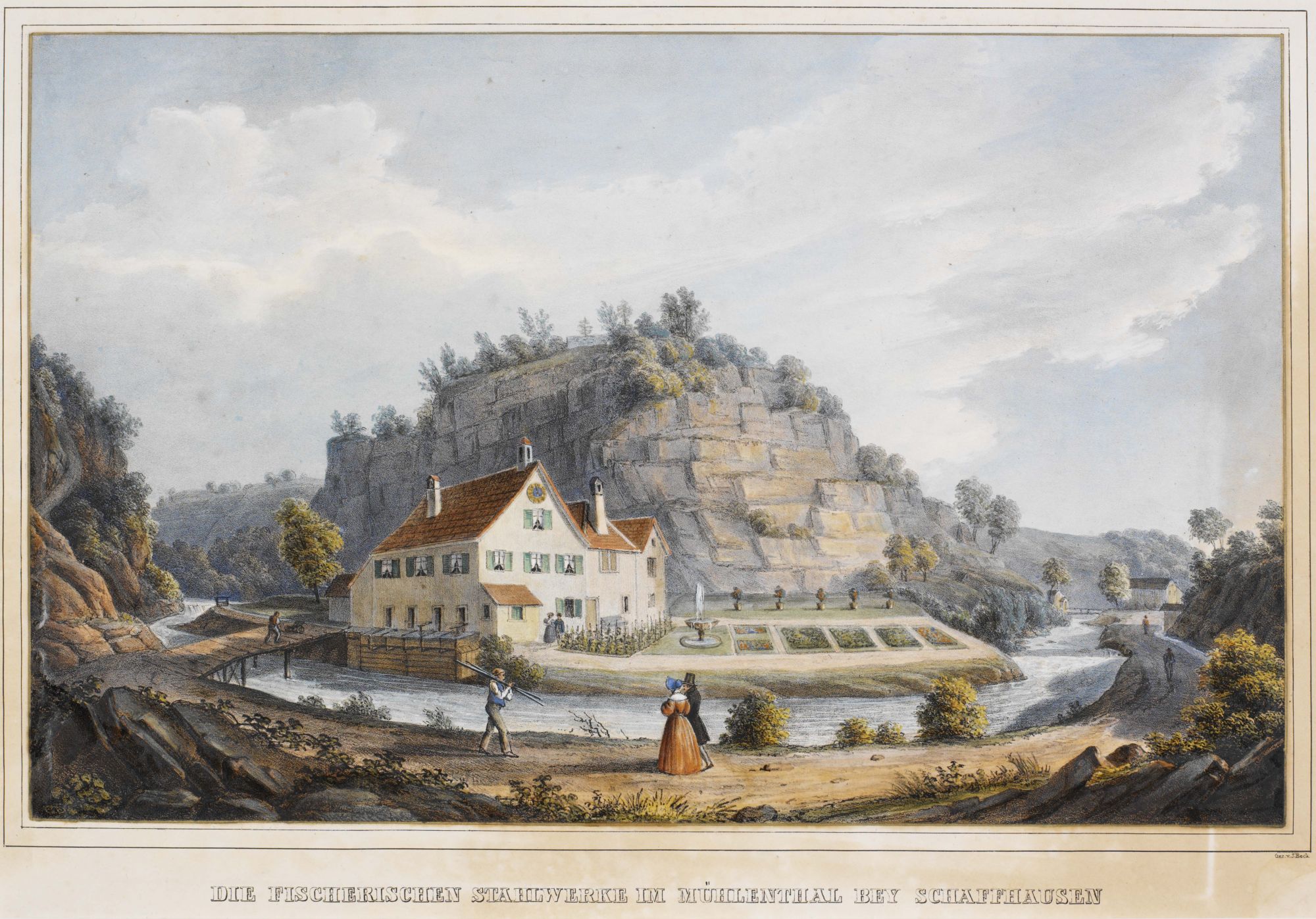
Schaffhausen, Konzernarchiv Georg Fischer AG
The Georg Fischer (GF) corporation was founded in 1802 as a small trade business by Johann Conrad Fischer in Mühlental bei Schaffhausen; today it is an international corporation comprising three divisions: Automotive, Piping Systems and Machining Solutions.
The corporate archive was established in 1943, based on holdings collected in the 1920s; it is considered a part of the cultural, economic and socio-historical heritage of Switzerland. The archive contains GF company documents since the founding, a part of the founding family’s estate, as well as holdings from various subsidiary and acquired companies (among them GF in Singen, Maschinenfabrik Rauschenbach, Amsler, Buss AG). By now the holdings have grown to occupy more than 1,000 meters of shelf space; chronologically, they go back to the 18th century.
Manuscripts list

Schaffhausen, Staatsarchiv
Since 1831 the state archives have served as final archive for the administration, the agencies, the courts and the businesses of the Canton of Schaffhausen.
Since the beginning of the 17th century, the archives has been located at the Rathausbogen. The current holdings encompass about 4 km. The main part of the collection consists of the legacies of the Abbeys of Allerheiligen (All Saints) and Sankt Agnesen in Schaffhausen and Sankt Georgen in Stein am Rhein, all of which were dissolved due to the Reformation. Also included are the collections of the state agencies created in order to administer the properties that had formerly belonged to the monasteries. The oldest document dates from the year 987.
Manuscripts list
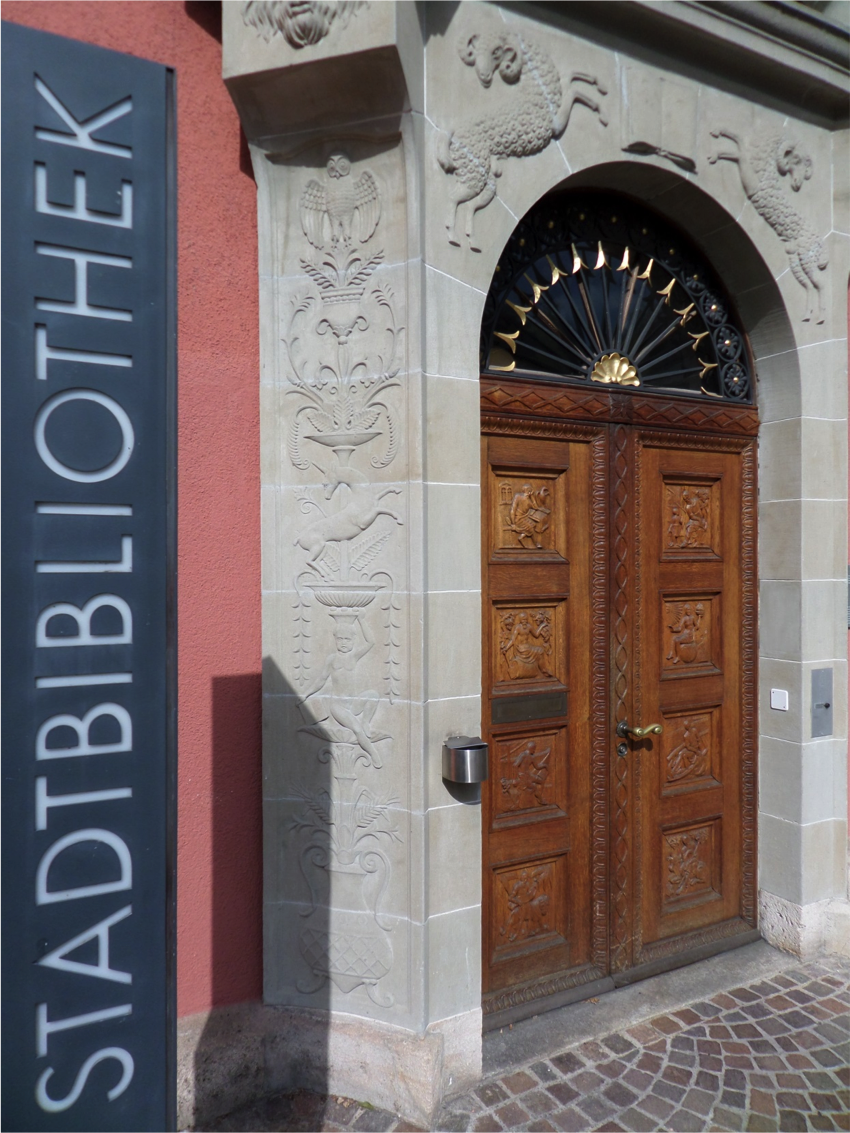
Schaffhausen, Stadtbibliothek
The historic holdings of the Schaffhausen libraries come from two sources: the “Bürgerbibliothek" (civic library) founded in 1636, which is dedicated to arts and sciences, and the “Ministerialbibliothek” (ministerial library), property of the clergy of the Protestant Reformed Church of the Canton of Schaffhausen and since 1923 deposited in the municipal library. It includes the collection of books and manuscripts, going back to the time of the Reformation, from the parish church of St. John. The ministerial library and the citizens’ library together own about 160 medieval manuscripts. Of particular importance among the 120 manuscripts from the ministerial library are the over 70 parchment codices created between 1080 and 1150 in the scriptorium of All Saints Abbey. Copies of the Bible and of the writings of the Church Fathers attest to the intellectual flourishing of the monastery, which was founded in 1049. The 40 medieval manuscripts from the citizens’s library come from all over Europe.
Manuscripts list

Schlatt, Eisenbibliothek
Outside of Schaffhausen, directly on the River Rhine, lies the Klostergut Paradies and its unique Iron Library. The core of this specialized library is literature about the history of iron and steel. The industrial company Georg Fischer AG (GF), founded in 1802, established the Iron Library Foundation in 1948. Today the library has an inventory of 40,000 books and about 800 journals.
As the name suggests, the original focus of the collection is the mining, concentration, extraction and processing of metals. By now the focus has expanded to include the entire history of technology as well as neighboring disciplines, such as industrial culture. Following developments at Georg Fisher AG, new focus areas arise, such as plastics technology.
The Iron Library is a publicly accessible reference library; a reading room is available for visitors.
Manuscripts list

Sion/Sitten, Archives de l'Etat du Valais/Staatsarchiv Wallis
The mandate of the state archives of Valais is administrative, historical and cultural: collecting, inventorying, preserving and providing access to the state’s archival holdings as well as to documents produced by the cantonal administration and to other documents relating to the history and society of Valais. The archivists care for the holdings entrusted to them, which extend over 13 linear kilometers, conserve and communicate them, and make them accessible to the public. The archivists also intervene with the state, with municipalities, and with private persons to provide advice regarding the management of documents and archives, regardless of the medium — paper or electronic.
Manuscripts list

Sion/Sitten, Archives du Chapitre/Kapitelsarchiv
The archive of the Cathedral Chapter of Sion has been attested since the 9th century; it has a rich collection, which is primarily known for its notarial deeds, going back to the 13th century. In addition, there are about 120 (legal and liturgical) manuscripts, the oldest of which dates to the 9th century, as well as numerous incunabula. The intrinsic value of this treasure is increased by the fact that in May 1788 the archive of the Bishop of Sion, the temporal and spiritual power, burned up in a fire that consumed a part of the city of Sion. The archive of the Cathedral Chapter therefore constitutes the institution’s memory and simultaneously serves as an essential source for numerous aspects of the history of Valais.
Manuscripts list

Sion/Sitten, Médiathèque Valais
Opened to the public in 1853, the Cantonal Library of Valais became the Multimedia Library of the Canton of Valais in the summer of 2000.
It has a number of objectives, among them:
- to collect, to showcase and to preserve the printed and audiovisual cultural heritage of Valais
- to offer the services of a multimedia library for study and for reference
- to contribute to the cultural and scholarly life of the canton
The Multimedia Library is based in Sion; it also offers services in the cities of Brig, Martigny and Saint-Maurice. Printed cultural heritage items are held in Sion; these consist of about 500,000 items, 60,000 small prints, placards and cards, and 5,000 musical scores. Incunabula, antique editions and manuscripts are also held in the Multimedia Library of Valais — Sitten.
Manuscripts list

Solothurn, Domschatz der St.-Ursen-Kathedrale
The St. Ursus Cathedral treasure is housed in two rooms within the cathedral.
The treasury contains a great quantity of gold- and silverwork of high artistic quality. They include late medieval, gothic and above all baroque instruments such as chalices, monstrances and reliquaries; among them are works by famous Augsburg masters; chalice and monstrance by Johannes Jakob Läublin (Schaffhausen); chalice by Hans Peter Staffelbach (Sursee); Chutzechännli (a ewer, the top part and lid of which are in the shape of an owl) by Johann Georg Wirz (Solothurn); globe reliquary by Anton Byss (Solothurn). The large ‘arca’ containing the heads of the saints Ursus and Victor is the cathedral’s most important reliquary.
The parament room displays paraments from five centuries in large drawers. These are magnificent multipartite vestments with chasubles, dalmatics, chalice veils, burses, stoles and maniples, which were donated by prominent figures of the city. Also on display are richly decorated Heiltumstafeln (tablets showing a treasure of relics). A particularly valuable part of the collection is the manuscripts (Hornbach Sacramentary, Silver Evangelary, Spiegelberger Missal, Prayer Book).
Manuscripts list
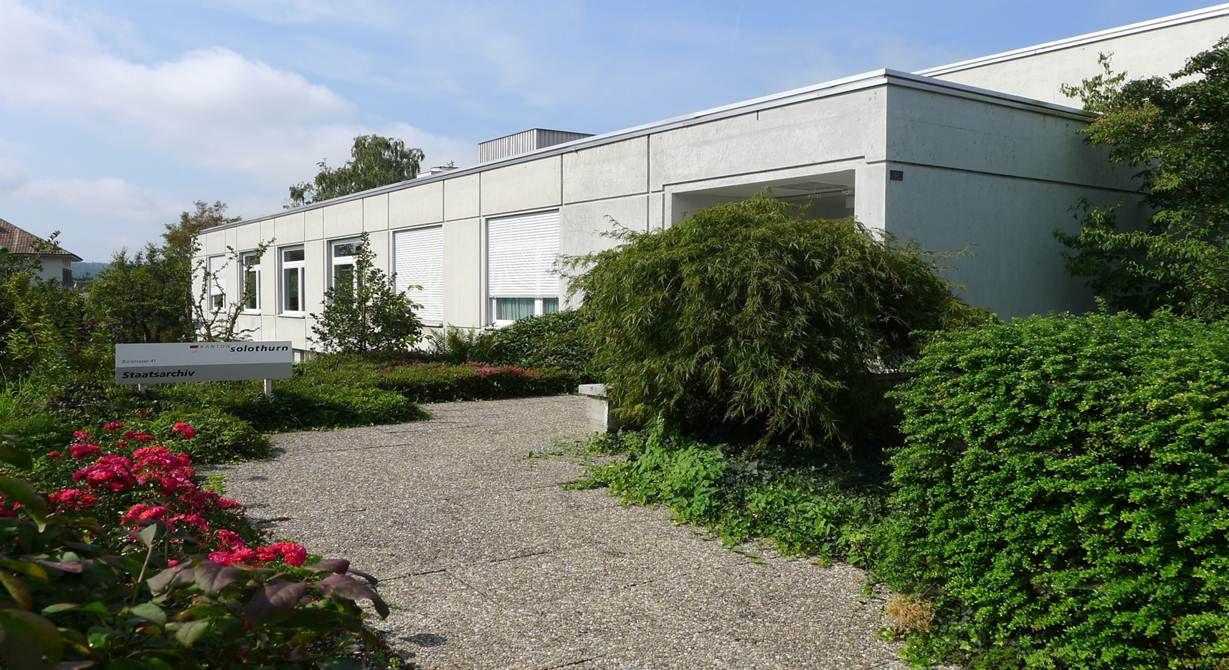
Solothurn, Staatsarchiv
The law on archives of 15 January 2006 describes the core mission of the state archives of Solothurn as preserving the cantonal agencies’ documents of permanent archival value. First and foremost, the archives hold the deposited records of the modern Canton of Solothurn since 1841, i.e., of the legislative cantonal council, of the executive governing council, of the departments and offices of the cantonal administration, and of the courts of Solothurn. Additional holdings include the archives of the canton’s legal predecessors, the imperial city and the later city republic of Solothurn (1218-1798), and of the Canton of Solothurn during the Helvetic Republic, the Mediation Era and the Restauration Era. Also preserved are parish records and cantonal civil registers (1580-1875), as well as the archives of dissolved monasteries (1147-1847). Finally, records of private origin supplement the state archives.
Manuscripts list

Solothurn, Zentralbibliothek
The Central Library of Solothurn is a cantonal, municipal and regional library. Its collection of printed books, including about 1,000 incunabula, is among the most extensive library holdings in Switzerland. With about 100 medieval manuscripts and a much larger number of early modern materials, the Central Library of Solothurn has diverse but comparatively less extensive holdings of manuscripts. These volumes had previously been locally owned by private persons or religious institutions (among others the Monastery of St. Ursus, the Franciscan Monastery, the Jesuit College in Solothurn, the family libraries of von Roll, vom Staal, Wagner, Besenval, Glutz). The historical collection has supra-regional significance and is an essential part of the cultural and historical heritage of the canton and of the city of Solothurn; it is one of the most significant collections in Switzerland and in the Southwestern part of the German-speaking region.
Manuscripts list

St. Gallen, Kantonsbibliothek, Vadianische Sammlung
The Vadian Collection, which is owned by the Ortsbürgergemeinde (citizen’s community) of St. Gall, is a permanent deposit in the cantonal library; it contains, among others, about 100 medieval and 700 early modern manuscripts. The late medieval illuminated manuscripts and the 15th century humanist manuscripts from Italy are of supra-regional significance. The Vadian Collection (VadSlg) also has the most important holdings of alchemic manuscripts (15th and 16th century) in Switzerland. Many of these manuscripts are included, either at the maximal or the normal level, in the virtual union catalog HAN, maintained by the Basel University Library.
Manuscripts list
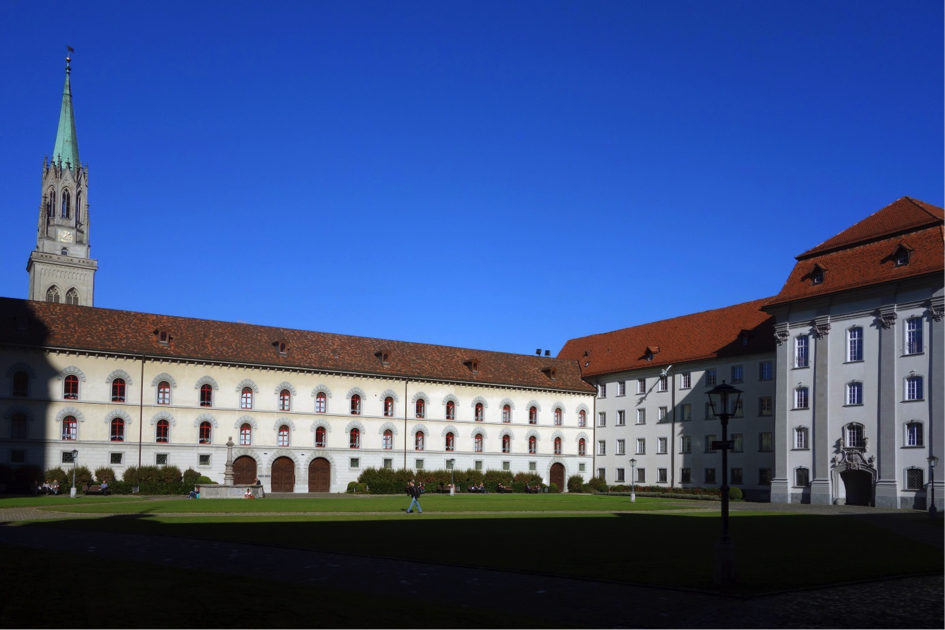
St. Gallen, Stiftsarchiv (Abtei Pfäfers)
The St. Gall Abbey Archives holds the legal documents and administrative files of St. Gall Abbey from about the year 720 up to its dissolution in 1805. It is part of the St. Gall Abbey District UNESCO World Heritage Site. As a second principal holding, the Abbey Archives manages the library and archives of Pfäfers Abbey. This Benedictine monastery was founded in the second quarter of the 8th century and was a prominent Raetian cultural center. In 1665 a great part of its library fell victim to a catastrophic fire. Barely thirty manuscripts, primarily medieval ones, were saved. After the dissolution of Pfäfers Abbey in 1838, its manuscript library and archives were transferred to St. Gall.
Manuscripts list

St. Gallen, Stiftsbibliothek
The Abbey Library of St. Gall is one of the oldest monastic libraries in the world; it is the most important part of St. Gall’s Abbey district UNESCO world heritage site. The library’s valuable holdings illustrate the development of European culture and document the cultural achievements of the Monastery of St. Gall from the 7th century until the dissolution of the Abbey in the year 1805. The core of the library is its manuscript collection with its preeminent corpus of Carolingian-Ottonian manuscripts (8th to 11th century), a significant collection of incunabula and an accumulated store of printed works from the 16th century to the present day. The Abbey Library of St. Gall was a co-founder of the project e-codices. With its famous Baroque hall, where temporary exhibitions are hosted, the Abbey Library of St. Gall is one of the most visited museums in Switzerland.
Manuscripts list

Trogen, Kantonsbibliothek Appenzell Ausserrhoden
The Cantonal Library of Appenzell Ausserrhoden, together with archives and museums, safeguards the lasting documentary heritage of the canton. As a site of free access to knowledge and information, its mission is to collect, to make accessible and to communicate not only printed works, graphic materials and electronic data that pertain to the Canton of Appenzell Ausserrhoden, but also manuscripts and bequests that are important to cultural history. Its inventory of medieval and early modern manuscripts is based on the collection of the jurist Carl Meyer (1873–1947) from Herisau, which contains, among others, valuable Books of Hours from the 15th and 16th centuries. Some of the Cantonal Library’s more recent manuscripts (a total of almost 500) are accessible via e-codices, such as the 1625/26 Ausserrhoder Chronik by Bartholomäus Anhorn and four richly illustrated folios from the first third of the 19th century.
Manuscripts list

Utopia, armarium codicum bibliophilorum
This library contains manuscripts from a variety of private collections that have chosen to publish selections from their most treasured books on e-codices. These manuscripts can be used and cited in the same way as others on the site (please see the Terms of Use), although information about their physical locations is not available to the user. Requests for commercial use of these facsimile images should be made to e-codices.
Manuscripts list
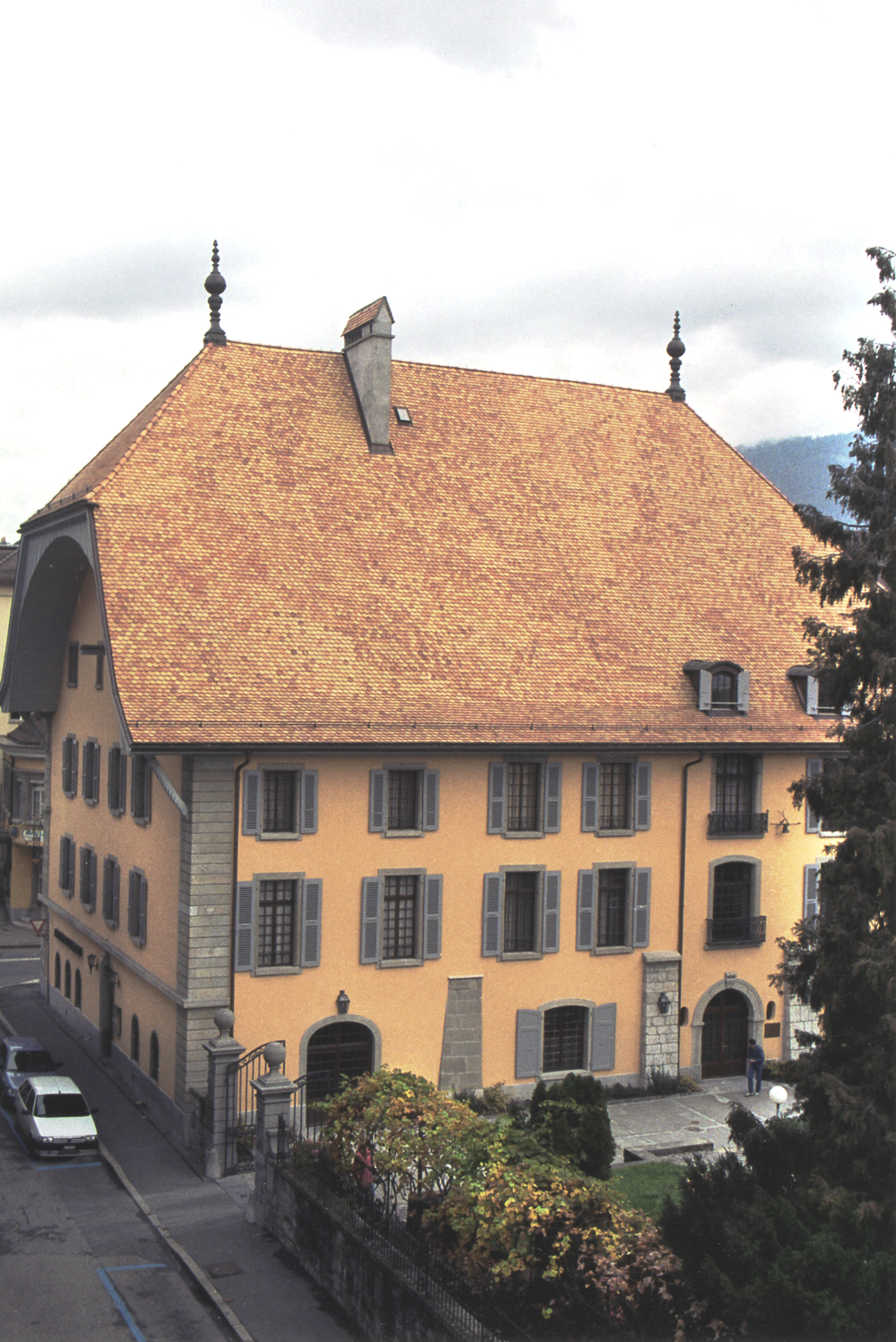
Vevey, Musée historique de Vevey
The Vevey Historical Museum, founded in 1897, occupies the second floor of the “Château”, a beautiful 16th century estate. In this historical setting, the town’s past, from Celtic times until today, is presented in permanent and temporary exhibits. Within numerous collections that have been amassed over the 120 years of its existence, the museum owns a number of antique books, among them about 60 manuscripts. Three especially remarkable works are from the Middle Ages: an early 14th century Bible from Paris and two volumes of an antiphonary from the Collegiate Church of St. Vincent in the city of Bern, dated to 1485-1490. The latter were previously held in the parish archives and in the Bibliothèque publique of Vevey.
Manuscripts list

Wädenswil, Dokumentationsstelle Oberer Zürichsee
The “Dokumentationsstelle Oberer Zürichsee” (DOZ; Documentation center of Upper Lake Zürich) collects and makes accessible everything that has been published in or about Wädenswil. It provides extensive documentation about companies, associations, personalities, buildings and much more. The documentation center also has available all important publications about neighboring areas and communities, especially about the area of Lake Zürich. Its representative holdings of literature on the history of the Canton of Zürich and Switzerland ensure its inclusion among superordinate connections. Its holdings include about 5,000 monographs (books and brochures), about 5,000 source documents (manuscripts, correspondence, records, photographs, maps, etc.), about 1,000 volumes of newspapers and journals, as well as about 10,000 thematically ordered newspaper clippings.
Manuscripts list

Wil, Dominikanerinnenkloster St. Katharina
St. Katharina developed from a community of beguines, founded in 1228 in St. Gall, to a convent of Dominican nuns with an important scriptorium.
During the Reformation, the community of nuns had to leave St. Gall and found a new home in Wil. They were able to survive the turmoil of the French Revolution by assuming the education of girls in Wil. Today the convent is a place of prayer and an oasis of tranquility.
The convent’s archive, which is not open to the public, holds 43 manuscripts from the 15th and 16th century. More manuscripts are held in other libraries or were lost during the upheavals at the time of the relocation in the 16th century.
Manuscripts list
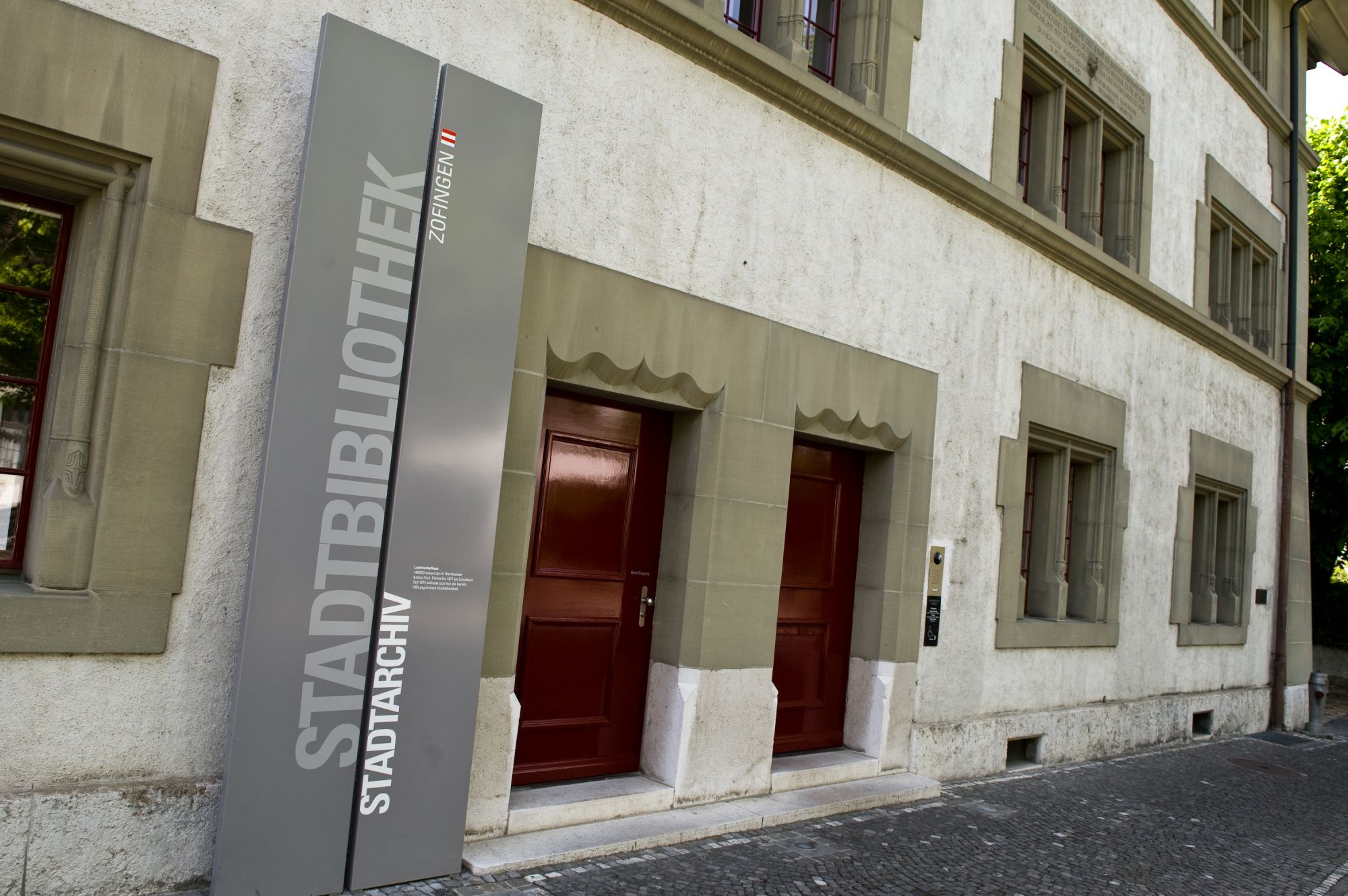
Zofingen, Stadtbibliothek
The city library of Zofingen, founded in 1693, is the oldest city library in the region. With about 27,000 printed items (15th - 19th century), it holds an encyclopedic collection with a valuable European cultural heritage that far transcends the limits of any local collection. The city library’s collection of manuscripts is not very extensive, but it comprises, in addition to local texts on regional themes (such as the history of the city library), several significant manuscripts, such as the Etymologiae by Isidore of Seville (St. Gall, second third of the 9th century), a Biblia sacra (France, 13th century), the Gesta Romanorum by Henricus Arnoldi (print and manuscript, 1471), as well as the Schachzabelbuch (book on chess) by Konrad von Ammenhausen (Lucerne?, 1420s). Also noteworthy is a compilation of letters by 16th century humanists collected by Wolfgang Musculus and his son Abraham Musculus, which came to Zofingen as the result of an inheritance.
Manuscripts list

Zürich, Braginsky Collection
The collection of Hebrew manuscripts of the Zurich collector René Braginsky is generally considered to be one of the largest private collections of Hebrew manuscripts in the world. It also contains a fair number of fine early printed books. The collection does not only contain codices from before and after the invention of printing, but also several hundred illuminated marriage contracts and Esther scrolls. In 2009, some hundred highlights from the collection were curated into a traveling exhibition, which was shown in Amsterdam, New York, Jerusalem, Zurich, and Berlin.
Manuscripts list
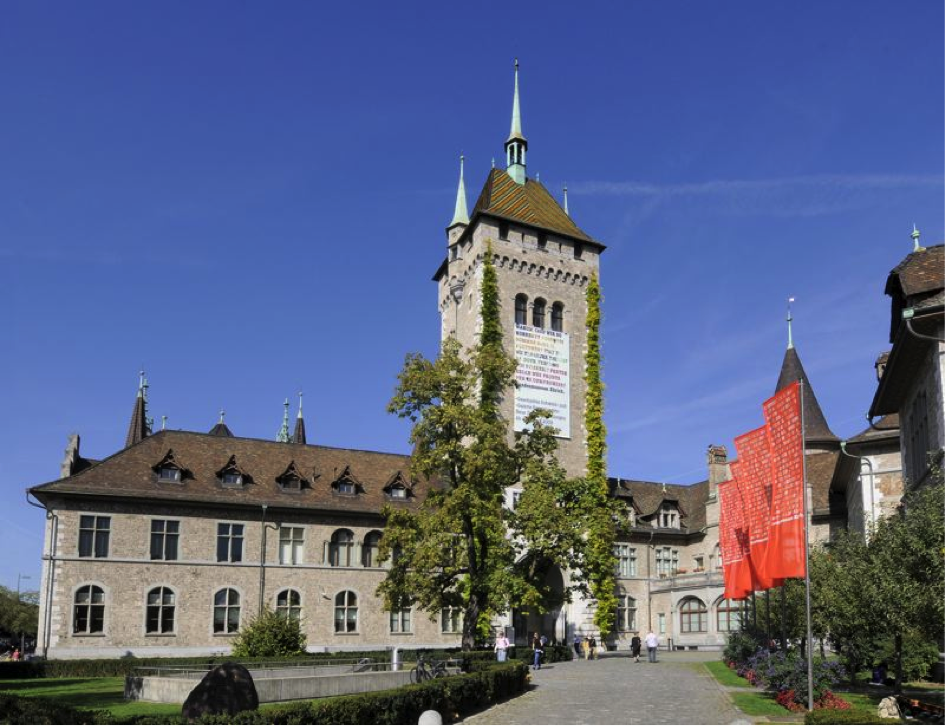
Zürich, Schweizerisches Nationalmuseum
Three museums – the National Museum Zurich, the Castle of Prangins and the Forum of Swiss History Schwyz – as well as the collections centre in Affoltern am Albis – are united under the umbrella of the Swiss National Museum (SNM). The permanent exhibitions at the museums present Swiss history from its beginnings to the present and — along with temporary exhibitions on current topics — give an insight into Swiss identities and the rich tapestry of our country’s history and culture. The unique collection of the Swiss National Museum comprises over 840,000 objects and object groups, which are subdivided into 14 sections. The various collections are the source and starting point for research and development activities.
Manuscripts list
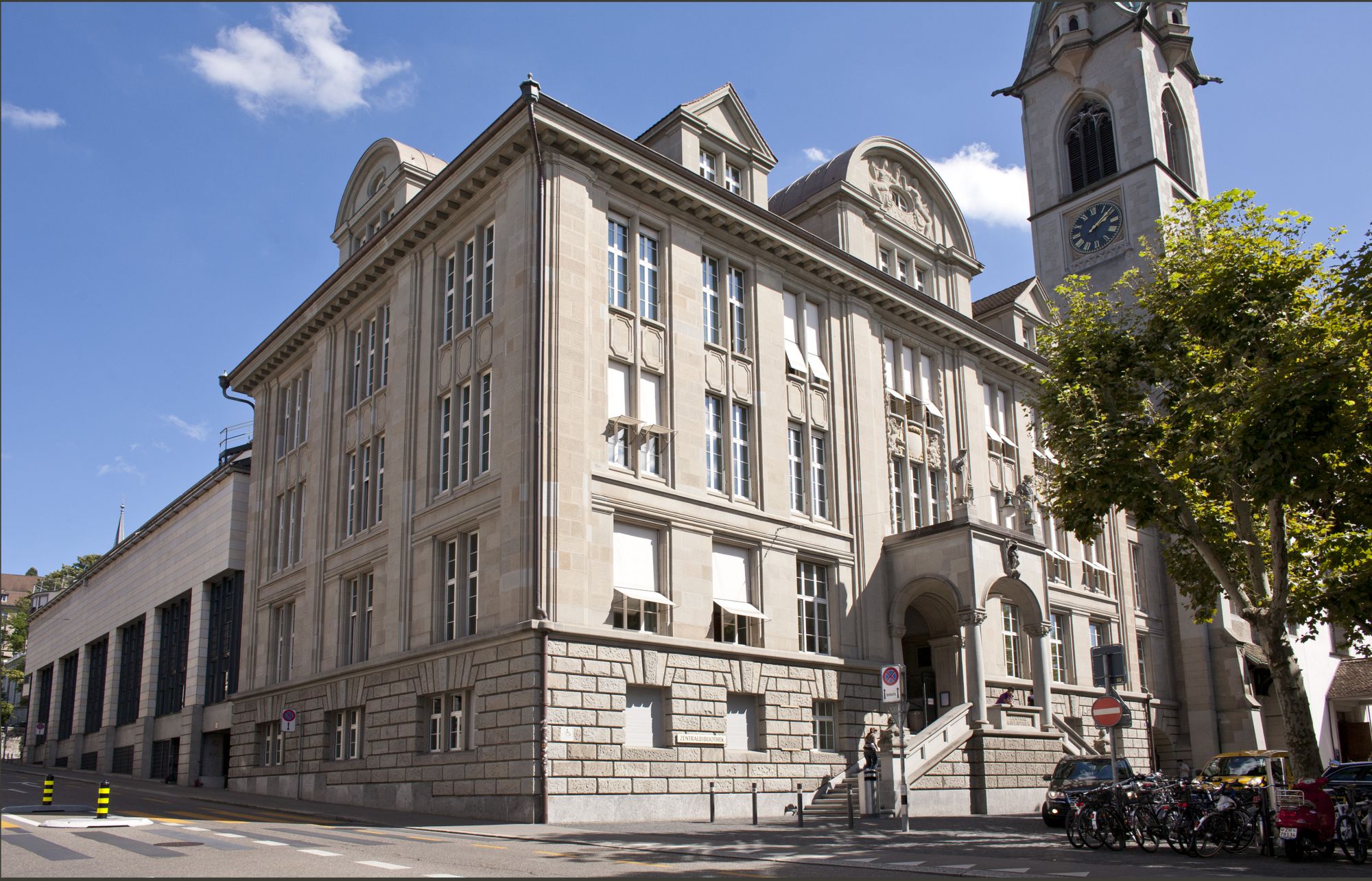
Zürich, Zentralbibliothek
The Zentralbibliothek Zürich (ZB; Central Library of Zurich) is the cantonal, municipal and university library of Zurich. Its department of manuscripts holds manuscripts and manuscript fragments dating from the 6th to the 21st century. The collection contains over 600 medieval codices, mostly in Latin or German, as well as over 30,000 modern volumes. Special mention should be made of the manuscripts from the library of the reformed Grossmünster Church of Zurich; this collection includes many volumes from Zurich monasteries that were dissolved, as well as the manuscript collection from Rheinau Abbey. Also significant are the archives of various families and guilds of Zurich, as well as more then 650 bequests from many people important in the history of Zurich such as Bullinger, Bodmer and Breitinger, Lavater, Pestalozzi, Gottfried Keller and Conrad Ferdinand Meyer. Finally, there is a collection of letters that consists of over 200,000 letters.
Manuscripts list

[sine loco], codices restituti
This virtual library contains digital manuscripts that have been virtually re-assembled from fragments held in various places. This enables us to recreate, as much as possible, the manuscript’s original state.
Manuscripts list